
Are you fascinated by the vibrant colors and active demeanor of mollies? You're not alone! Mollies, with their captivating presence, are a popular choice for many freshwater aquarium enthusiasts. But before you introduce these delightful fish into your aquatic world, it’s crucial to understand their lifespan. Knowing how long mollies live can help you provide the best care for them.

Mollies typically live for about 3 to 5 years with proper care. This duration can vary based on several factors, from environmental conditions to the specific care they receive. For a comprehensive look at common varieties and their characteristics, check out this guide on types of molly fish. While these fish are hearty and adaptable, a few tweaks in your approach can significantly impact their longevity.

Dietary Needs: Mollies are omnivores, meaning they thrive on a varied diet that includes both plant-based and protein-rich foods. Ensuring a balanced diet not only boosts their immune system but also contributes to their overall longevity. Include high-quality flakes, live foods like brine shrimp, and vegetable matter in their meals.

Water Quality: Clean, well-maintained water is crucial for mollies. They prefer water that has stable parameters: temperatures between 72°F to 78°F, a pH of 7.5 to 8.5, and moderate hardness. Regular water changes and a reliable filtration system are essential to maintain these conditions. To better understand the impact of tank conditions, visit this informative page about their care from WebMD’s pet health guide.

Social Environment: Mollies are sociable creatures and thrive better in groups. However, avoid overcrowding the tank, as this can lead to stress and a shorter lifespan. A good rule of thumb is to provide at least 10 gallons of space for a group of three to four mollies.
| Factor | Optimal Condition | Impact |
|---|---|---|
| Diet | Varied: high-quality flakes, live food, veggies | Boosts immunity and lifespan |
| Water Quality | Temp: 72-78°F; pH: 7.5-8.5 | Ensures healthy living conditions |
| Social Environment | Schooling in groups | Reduces stress |

While mollies are generally hardy, they are susceptible to typical freshwater fish diseases like Ich and fin rot. Watch for signs such as white spots, clamped fins, or lethargy, and address any issues promptly. Maintaining optimal tank conditions and providing a varied diet can help prevent these health problems. For beginners or those interested in specific variants, the Balloon Black Molly care guide offers helpful insights into proper maintenance and disease prevention.

To enhance your mollies' lifespan, here are some actionable steps:

It’s also worth noting that lifespan can vary among different molly types. For instance, male Sailfin Mollies may live less than one year after reaching sexual maturity due to their robust breeding behaviors. For more information, refer to the U.S. Fish & Wildlife ecological risk summary.
Welcoming mollies into your aquarium not only adds dynamic movements and colors but also a responsibility to care for them. By understanding and adjusting to their needs, you can ensure a lively and healthy life for your mollies. What has been your experience with keeping mollies? Share your tips or questions in the comments below!

Provide optimal nutrition for your newborn freshwater fish with our Tiny Fry Powder. Enriched with 48% protein, amino acids, vitamins, and minerals, this slow-sinking formula ensures essential growth and health. The very fine powder is ideal for fry measuring 0.1mm to 0.2mm, delivering complete nutrition in every tiny bite. Perfect for breeders looking to support the early stages of fish development.
Mollies typically live for about 3 to 5 years when kept in optimal conditions. To ensure their longevity, maintain clean water, provide proper nutrition, and avoid overly stressful environments in the tank.
Happy mollies are active and enjoy exploring their tank. Look for signs of energy and confidence such as steady swimming and engagement with their surroundings. Lethargy or hesitance may indicate stress or health issues.
For mollies to thrive, they require clean water, a stable temperature between 72-78°F, and a healthy diet that includes algae and high-quality fish food. Avoid overcrowding and ensure compatible tank mates.
Some common problems include poor water quality, overfeeding, and stress from aggressive tank mates. Disease such as fin rot or ich can also arise if the tank conditions are not well-maintained.
Mollies and goldfish have different water temperature preferences. Mollies need warmer water (72-78°F), while goldfish thrive in cooler conditions. Therefore, it's not ideal to keep them in the same tank.
In the wonderful world of mollies, there's always more to discover! If you're as charmed by these finned friends as we are and want to continue your journey into the aquatic abyss, why not keep the conversation going with us? We're just as eager to share more fish-loving tales and tips. Whether it's glimpses of breathtaking aquariums on our Instagram, drool-worthy aquatic inspiration on Pinterest, or joining lively discussions over on X, there's a platform for every fish enthusiast. Don't forget to drop by our Facebook page as well, where we're always excited to meet fellow mollie admirers. We can't wait to connect with you and dive even deeper into the aquatic world. See you on the other side of the glass!
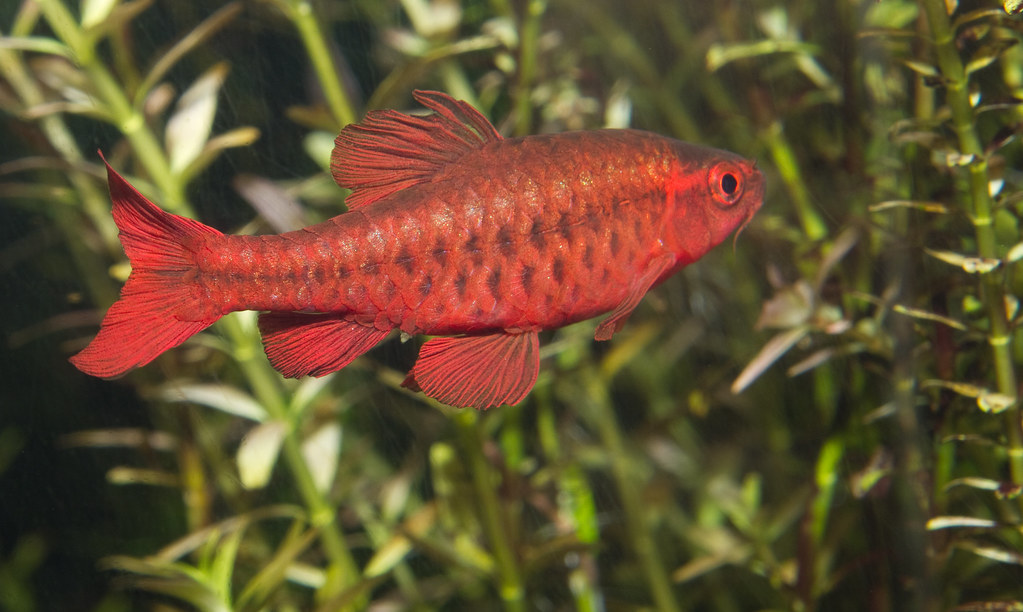
If you've ever paused in front of an aquarium, captivated by the vibrant colors and fluid movements of the fish inside, chances are you've seen cherry barbs. These delightful, bright red fish are popular among hobbyists for their easy care and stunning appearance. But before you dash off to your local pet store, there's one key question to answer: How many cherry barbs should you keep together?

Cherry barbs are inherently social creatures. In the wild, they thrive in groups, a behavior that extends to any home aquarium setup. When housed in small numbers, cherry barbs can become stressed or shy, which can negatively impact their health. Therefore, it’s crucial to think about how many to keep together.
The golden rule for cherry barbs is to start with a school of at least six. Keeping fewer than this may lead to issues with social dynamics, like increased aggression or anxiety. A group of six allows for natural behaviors, reducing stress and showcasing the cherry barbs' fascinating interactions and personalities. Additionally, observing a group swimming and interacting can be more entertaining than just having a solitary fish. For more details on cherry barb care and housing needs, you’ll find expert guidance to ensure a thriving aquarium.
While a group of cherry barbs is ideal for creating a lively environment, they do need the space to swim freely. A 20-gallon tank is generally recommended for a school of six cherry barbs. This space provides them with enough room to exhibit natural behaviors and maintain good water quality. Below is a table summarizing an ideal setup:
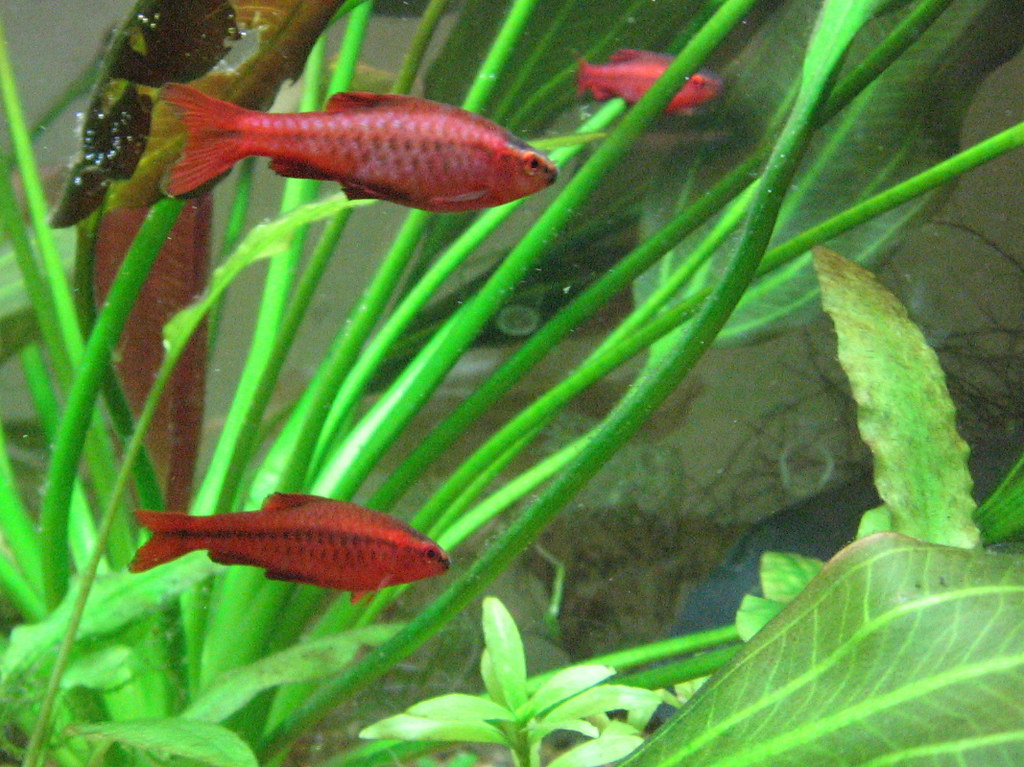
| Number of Cherry Barbs | Minimum Tank Size | Water Conditions |
|---|---|---|
| 6 | 20 gallons | pH 6.0-7.5, temperature 74-79°F |

Over or understocking can lead to several issues. Too few cherry barbs might result in heightened stress levels, while overcrowding can cause poor water quality and the spread of disease. Ensuring the right tank size and number of fish can prevent these problems and keep your cherry barbs healthy and happy.
Cherry barbs are generally peaceful and mix well with other fish species, but it’s essential to choose compatible tank mates. They thrive with other non-aggressive fish of similar size but may become stressed or even prey if kept with larger, aggressive species. When selecting companions, consider fish like tetras, rasboras, or small catfish.
Have you kept a school of cherry barbs before? Share your experiences in the comments, and let’s dive deeper into the world of these charming fish!
Cherry Barbs thrive in groups of six or more, as they are schooling fish. A 10-gallon aquarium can comfortably house a small group, but larger groups will display more outgoing and natural behaviors. Always ensure there is ample space and adequate water conditions.
Yes, Cherry Barbs are peaceful fish and do well in a community tank. They should be paired with other non-aggressive species like Neon Tetras, Corydoras, or Guppies to avoid stress and ensure harmony.
The minimum tank size for Cherry Barbs is 10 gallons, which can accommodate a small group. However, a larger tank (20 gallons or more) is better for creating a more spacious and natural environment, especially for larger groups.
Males tend to have vibrant red coloration, while females are lighter, with a more orange or pale tone. Females also have rounder bodies, especially when ready to spawn, whereas males are slimmer.
Cherry Barbs are omnivores that enjoy a varied diet. They can be fed high-quality flake food, live food (like brine shrimp), frozen food, and blanched vegetables (e.g., zucchini or spinach) to maintain their health and coloration.
Wrapping up our dive into the captivating world of cherry barbs, I hope you're feeling more confident about how to create the perfect home for these charming fish. Whether you're just starting out or have a thriving aquarium community, keeping a happy school of cherry barbs is sure to add a splash of color and excitement to your underwater oasis. If you're as fascinated by these little swimmers as we are, why not join our vibrant community on Pinterest for more aquascaping ideas or follow us on Instagram to stay inspired with stunning aquatic designs? Share your own cherry barb stories and tank setups with us on X (formerly Twitter) and be sure to check out our friendly discussions and updates on Facebook. We can't wait to connect with you and hear how your cherry barb community is swimming along!
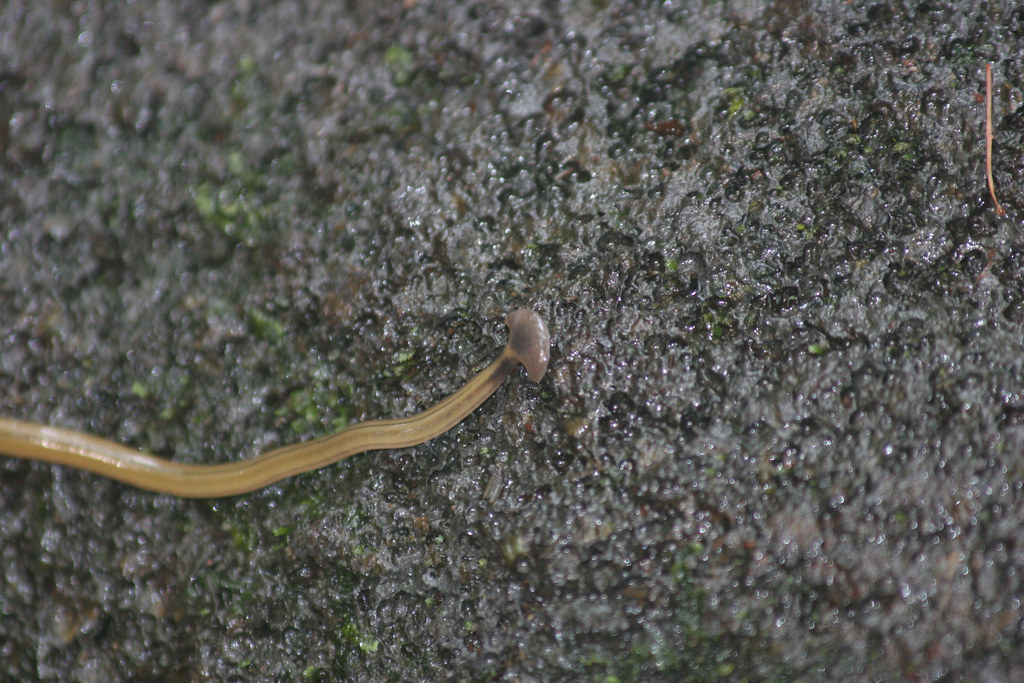
Spotting tiny, flat-bodied creatures waving around in your fish tank may raise a few eyebrows. Meet planaria, those uninvited but fascinating guests in your aquatic environment. While their presence is often harmless, an outbreak can bring trouble to your tank's harmonious ecosystem. Let's explore what planaria worms are, the potential issues they present, and how to manage them effectively.
Planaria are small, flatworms known for their incredible regenerative abilities, allowing them to rebuild lost body parts—a remarkable trait, but not one you necessarily want multiplying in your fish tank. Typically, planaria hitch a ride into your tank through live plants, new fish, or substrate from another tank. They're usually brown or white and often mistaken for detritus worms.
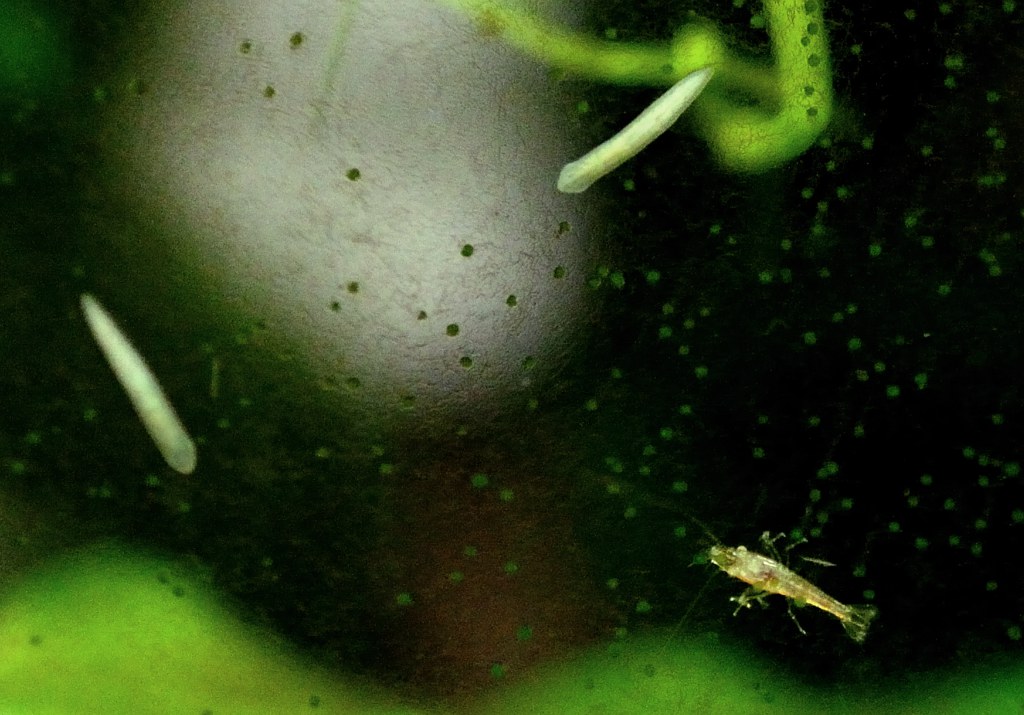
Though non-parasitic and often harmless to fish, planaria can become a nuisance if their population explodes. Here’s why they might pose a problem:

Taming these worms doesn't have to be an all-out battle, especially when you catch them early. Here’s how to maintain control:
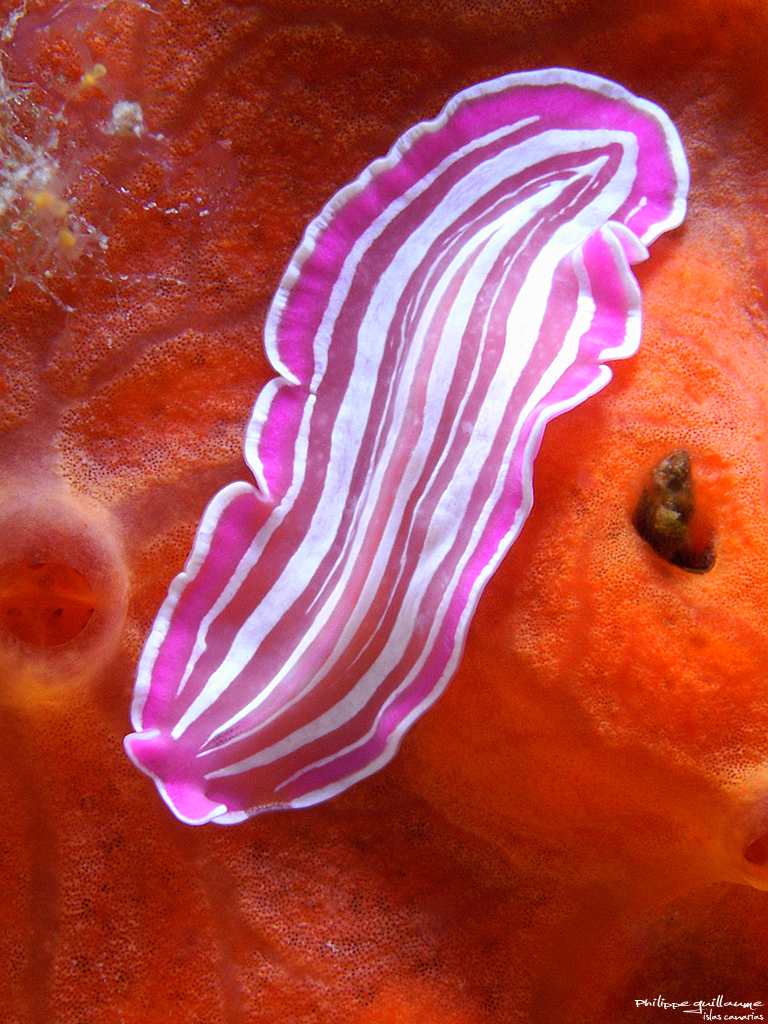
| Method | Ease of Use | Effectiveness |
|---|---|---|
| Reducing Feeding | Easy | Moderate |
| Regular Cleaning | Moderate | High |
| Planaria Traps | Moderate | High |
| Chemical Treatments | Moderate/Difficult | Very High |
| Predatory Fish | Easy | Variable |
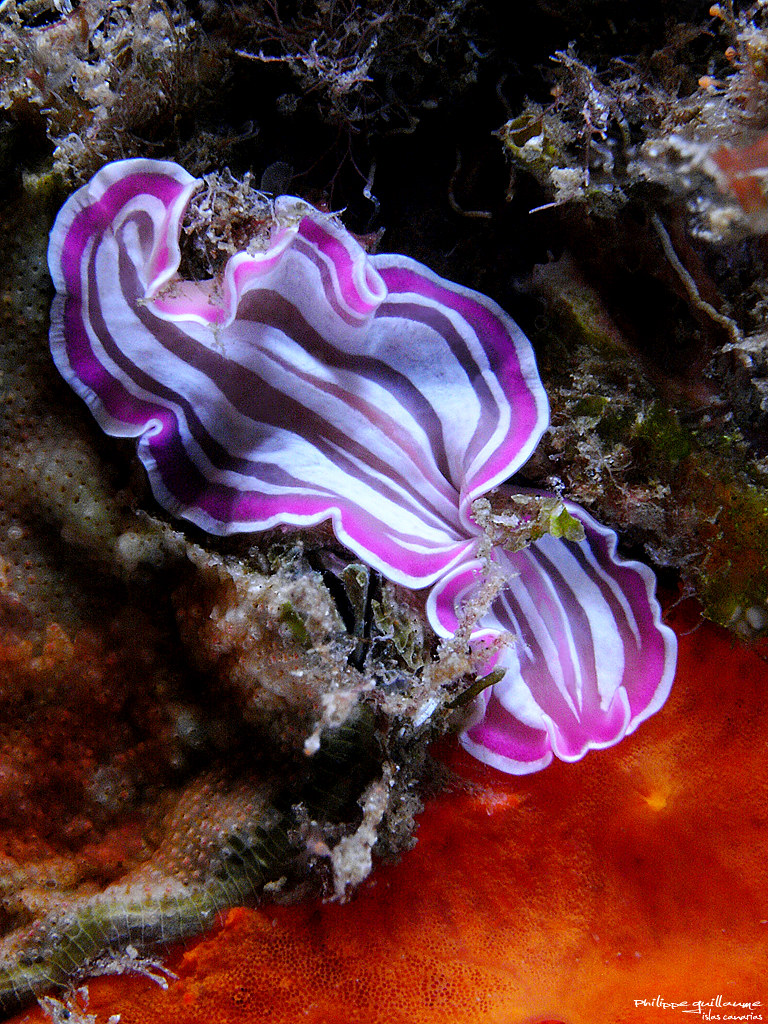
Even with the best preventative measures, the occasional planaria sighting may still occur. Stay active and observant, keeping your tank's environment balanced and healthy. And remember, sharing experiences can be as rewarding as seeing your fish flourish. Have you battled planaria in your aquarium? What methods have you found most effective? Join the conversation by leaving a comment below!
No, planaria are not considered beneficial for an aquarium. They can harm fish, shrimp, and plants by disrupting the tank's balance and feeding on soft tissues. It's best to remove them to maintain a healthy environment.
To remove planaria worms, reduce overfeeding, vacuum the substrate to remove debris, and consider using medications like Fenbendazole. Be cautious when using chemicals and always follow product instructions.
Yes, planaria can harm fish by attaching to them and irritating their skin. While they don't typically kill fish directly, stress caused by their presence may weaken fish over time.
Planaria can be a serious threat to shrimp, especially smaller or juvenile shrimp. These worms are known to attack and consume them, so it's important to act quickly to eliminate planaria from the tank.
Planaria often thrive in tanks due to overfeeding, poor maintenance, and excess organic waste. Regular cleaning and controlling the feeding amount can help prevent their growth and recurrence.
Diving into the world of planaria worms opens up a fascinating chapter of aquarium care, and we hope this post helps you better understand these curious critters. But don't let your exploration stop here! For more insights, tips, and engaging discussions on aquatic life, why not follow along with us on our X (formerly Twitter) for quick updates and fun facts? We're also sharing gorgeous tank setups and unique aquatic plants on our Instagram—a perfect place to draw some inspiration for your underwater haven. If you're keen on diving deep into beautiful pins, check out our boards on Pinterest. Lastly, join our community on Facebook—where we love hearing about your aquarium adventures and learning together. We're excited to connect with you and hope you’ll share your stories and photos with us too! Stay curious and keep the waves rolling smoothly in your tank!

It’s never easy to think about euthanizing a pet, even if it’s something as small as a fish. Yet, ensuring a peaceful and humane end when their quality of life diminishes is a gesture of kindness. Let's dive into how you can make this process as gentle and respectful as possible.

Recognizing when a fish should be euthanized is crucial. Look for signs of severe illness or injury, such as:
Consulting with a vet when you're unsure is always a good step. Emotional bonds can cloud judgment, so professional advice can provide perspective.
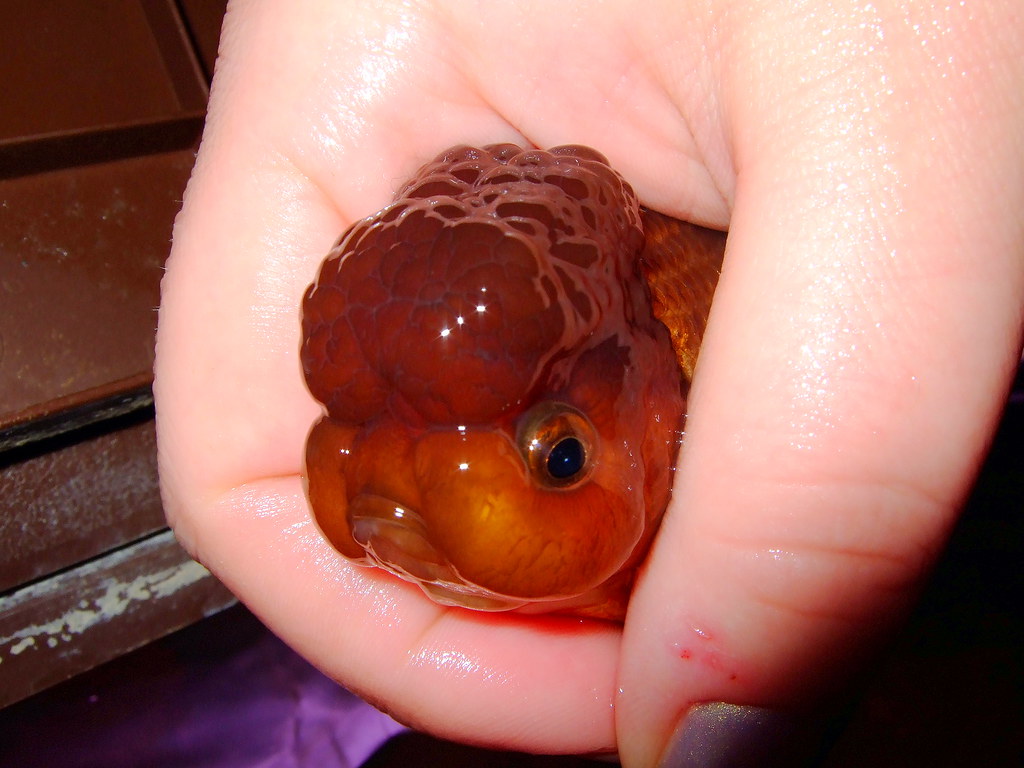
Choosing the right method to euthanize your fish is essential to minimize suffering. Here’s a comparison of commonly advised humane methods:
| Method | Pros | Cons |
|---|---|---|
| Clove Oil | Peaceful, gentle sedation | Requires precise dosing |
| Barbiturates (vet-administered) | Quick, professional handling | Needs veterinary assistance |
| Cooling (freezer) | Less skill required | Long duration, potential distress |
If you're looking for detailed descriptions of humane euthanasia techniques, including information on anesthetic overdose, the guidelines outlined by the University of Maryland are an excellent reference. You can view them here: guidelines for fish euthanasia.

The clove oil method is widely recommended for its humane approach. Here’s a simple guide:
Ensure you’re aware of the fish’s signs of distress, and always prepare enough clove oil solution to avoid prolonging discomfort.
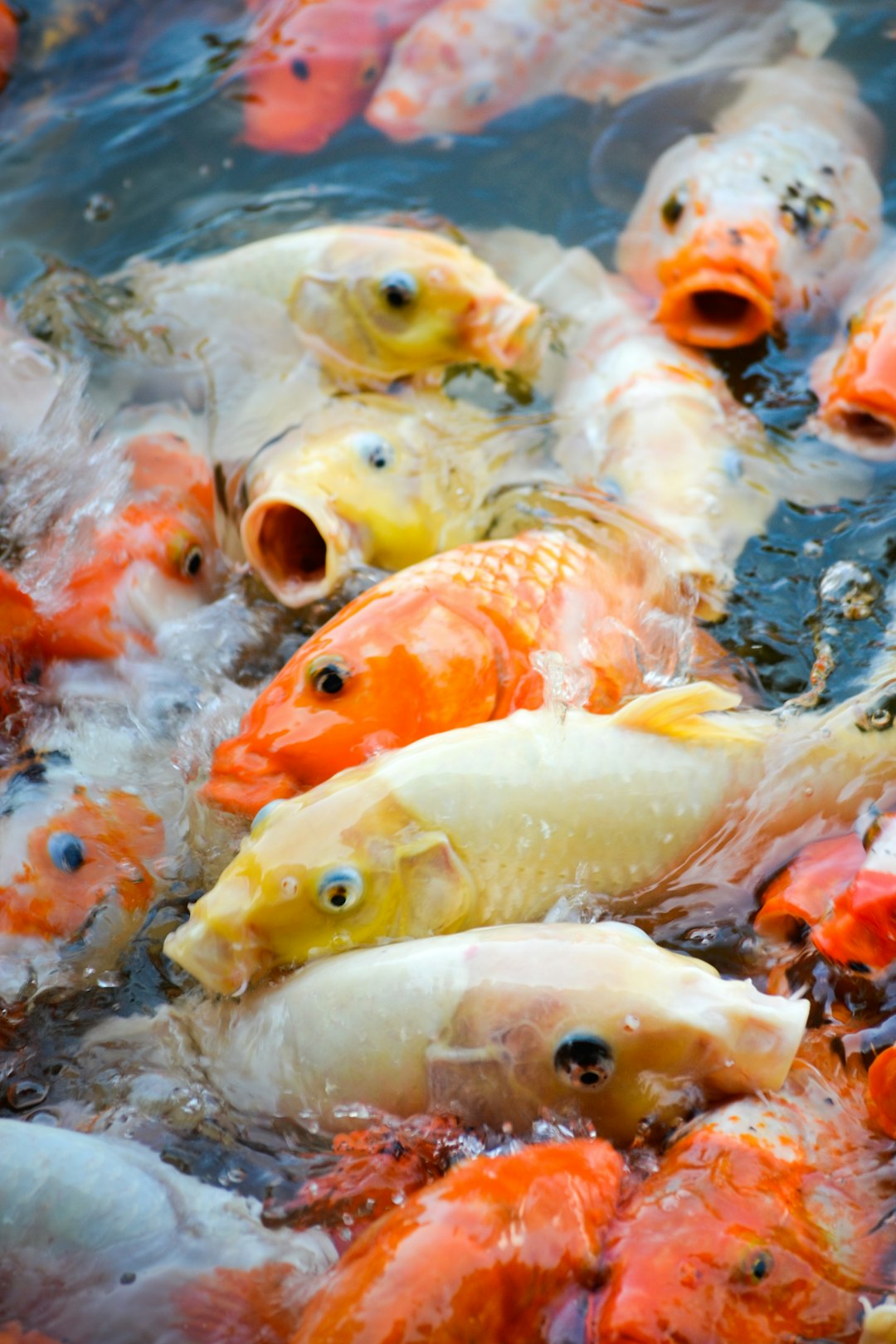
Steer clear of practices like flushing, which leads to high stress, or using household items that cause pain. These methods not only increase anguish but are also often deemed inhumane.
In some cases, large-scale euthanasia is necessary in hatchery settings to control the spread of disease. For example, fishery staff had to intervene to protect healthy populations at a hatchery following an outbreak. You can read more about such real-world applications in this report from the Idaho Department of Fish and Game.

What you do after euthanasia is equally important. Consider your options:
Overall, remember the bond you shared and care you provided, which are the ultimate tributes to your fish.
It's always tough to say goodbye, but creating a peaceful end is a final act of love. How have you navigated the end-of-life decisions for your pets? Share your experiences or tips below; your insights could be invaluable to others facing similar situations.
The most humane method is using a fish anesthetic overdose, such as Benzocaine Hydrochloride, followed by physical decapitation to ensure a quick and painless process. This method is recommended to minimize stress and suffering.
Euthanasia may be considered if your fish shows signs of terminal illness, severe trauma, or prolonged suffering. Consulting a veterinarian can help determine if euthanasia is the right option.
Yes, an alternative includes using clove oil as an anesthetic, followed by a physical method like decapitation. This approach must be done carefully to ensure humane handling.
Clove oil is commonly used as a sedative for fish. When administered in high doses, it leads to painless euthanasia by causing deep sedation followed by respiratory arrest.
While a veterinarian's guidance is ideal, it is possible to euthanize a fish humanely at home using approved methods like anesthetics (e.g., clove oil). Ensure you follow recommended procedures to avoid unnecessary suffering.
As we wrap up this delicate topic, remember that the love and care you give your fish throughout its life extends to its final moments. It’s all part of being a compassionate pet owner. If you found this guide helpful or are looking for more insights on pet care, why not stay connected with us? Dive into a world of animal care tips and beautiful aquatic photos on our Pinterest board. For a daily dose of inspiration, join us on Instagram where we share snapshots of stunning tanks and setups. Let's tweet about it and keep the conversation going on X (formerly Twitter), or feel free to connect with our community on Facebook. Your journey in pet care matters to us, and we’re here to support you every step of the way!
Caring for a powder blue tang is akin to welcoming a vibrant piece of the ocean into your home, but it's essential to know how to cater to their unique needs. For your marine love affair to thrive, a bit of homework goes a long way. Dive in with us and discover a tried-and-true approach to keeping your powder blue tang healthy and happy!
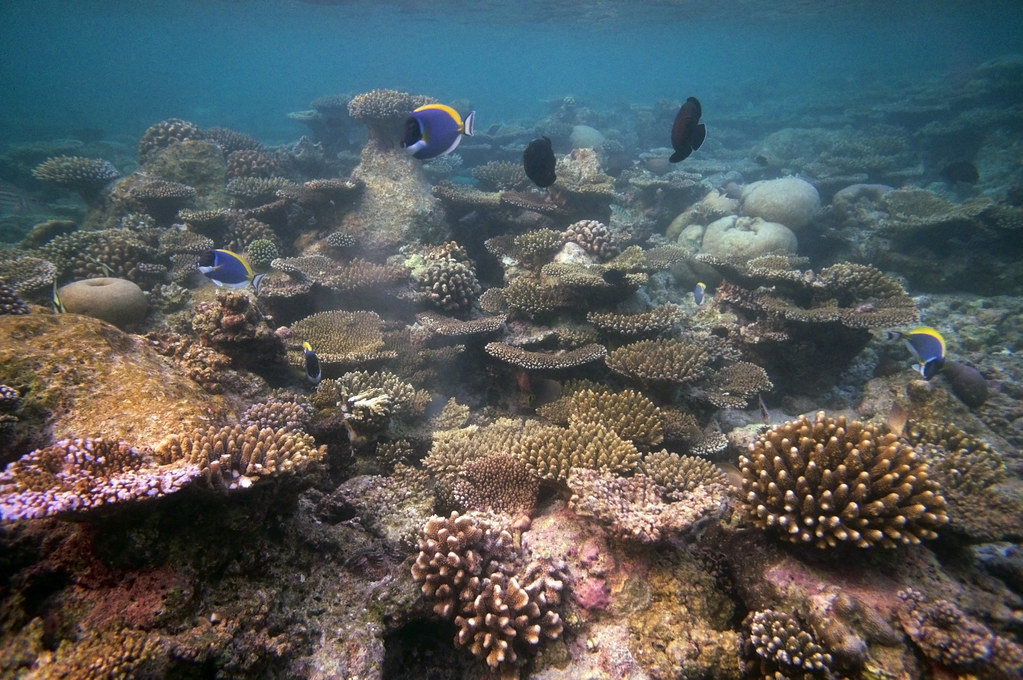
Choosing the right tank setup is crucial for the well-being of your powder blue tang. These fish prefer a spacious, well-established marine environment. Opt for a tank that holds no less than 100 gallons. Larger tanks are even better, providing more swimming room and a stable environment.
Ensure your tank is equipped with strong water movement and efficient filtration systems. Powder blue tangs are very active swimmers and demand high oxygen levels. An irregular water current simulates their natural habitat and keeps them active and engaged.
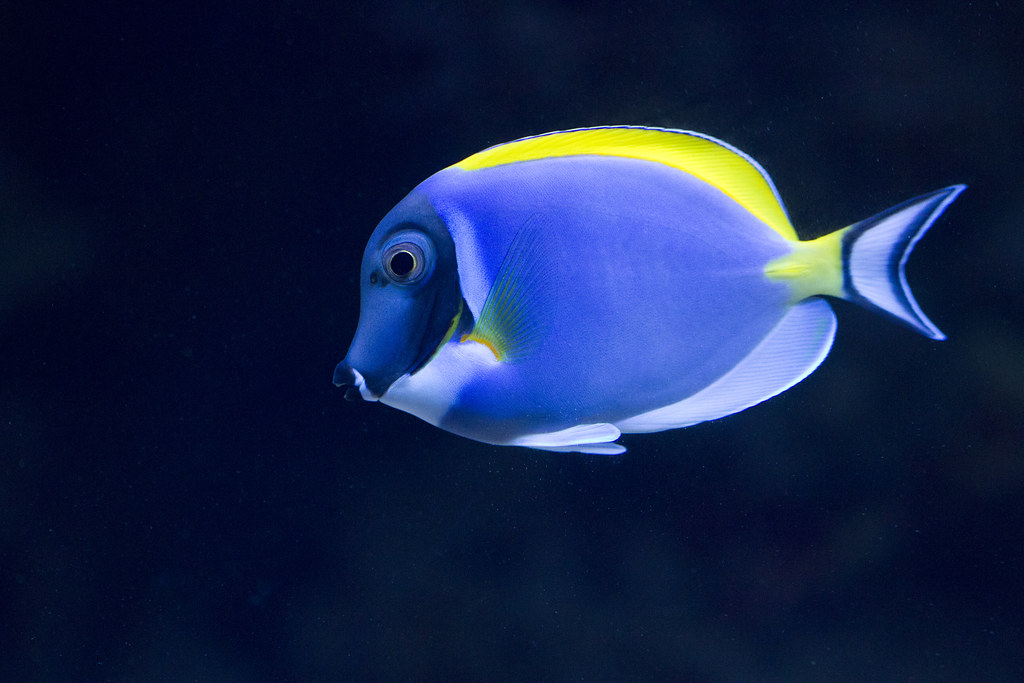
Diet plays a significant role in the health of your powder blue tang. In the wild, they are primarily herbivores, feasting on algae. Thus, a varied diet rich in vegetable matter is key. Incorporate high-quality marine algae and seaweed, alongside spirulina and commercial pellets designed for herbivorous fish.
Try to introduce some diversity with occasional protein-based foods like brine shrimp or mysis shrimp. However, moderation is key; excessive protein can lead to health issues.
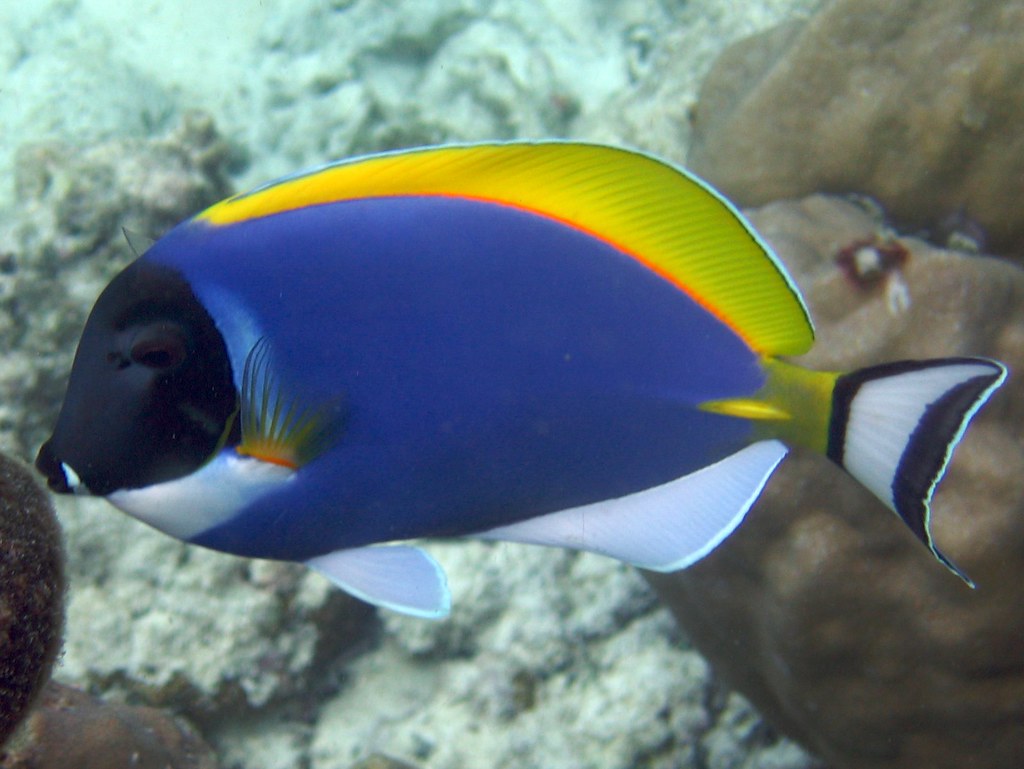
Understanding the social nature of powder blue tangs can help in managing their temperament and peaceful coexistence with tank mates. These fish can be territorial and sometimes aggressive, particularly towards other tangs. To reduce stress and aggression, maintain a single tang per tank unless the tank is very large and complexly structured.
They do well with other non-aggressive species. Be watchful for signs of bullying or stress like color fading or erratic swimming. For a fun and educational take on these remarkable creatures, check out "Don't call me Dory" to learn more about the distinctions between powder blue tangs and their popular animated counterparts.
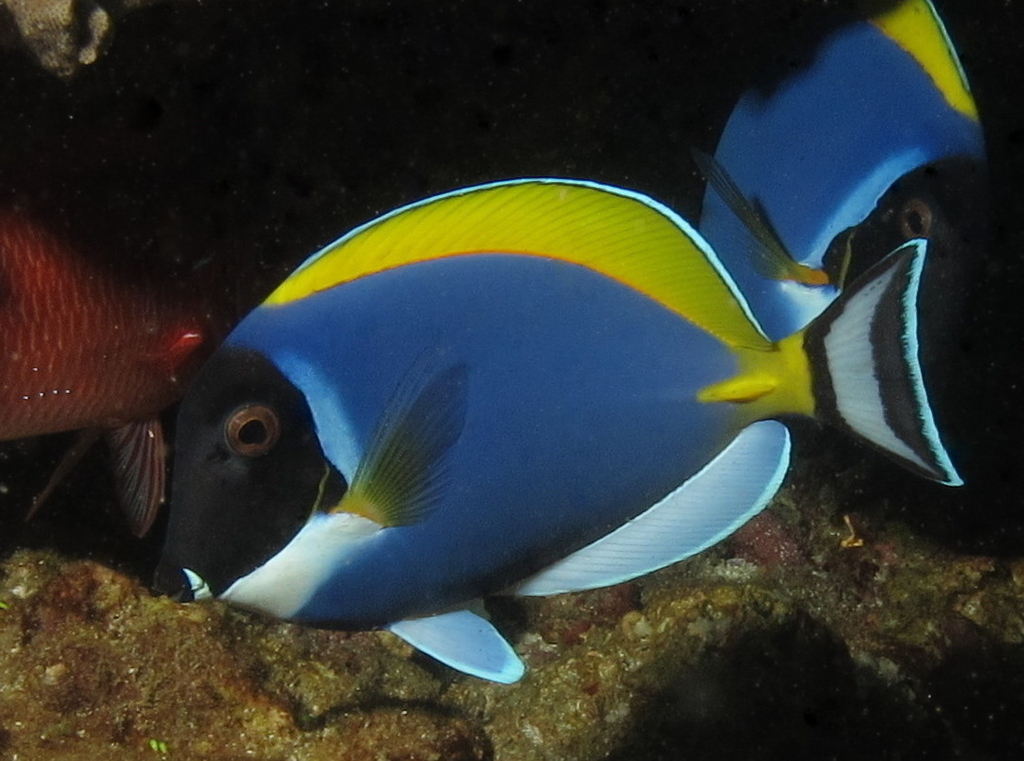
Being vigilant about your powder blue tang's health can prevent common diseases. They are prone to marine ich and other parasitic infections. Newly acquired fish should undergo quarantine to ensure they're disease-free before entering the main tank.
Regularly observe your fish for any behavioral changes or physical symptoms like white spots, rapid breathing, or lack of appetite. Maintain excellent water quality to support their immune system. For more insight into their stunning coloration and aquarium appeal, this species profile offers detailed descriptions.
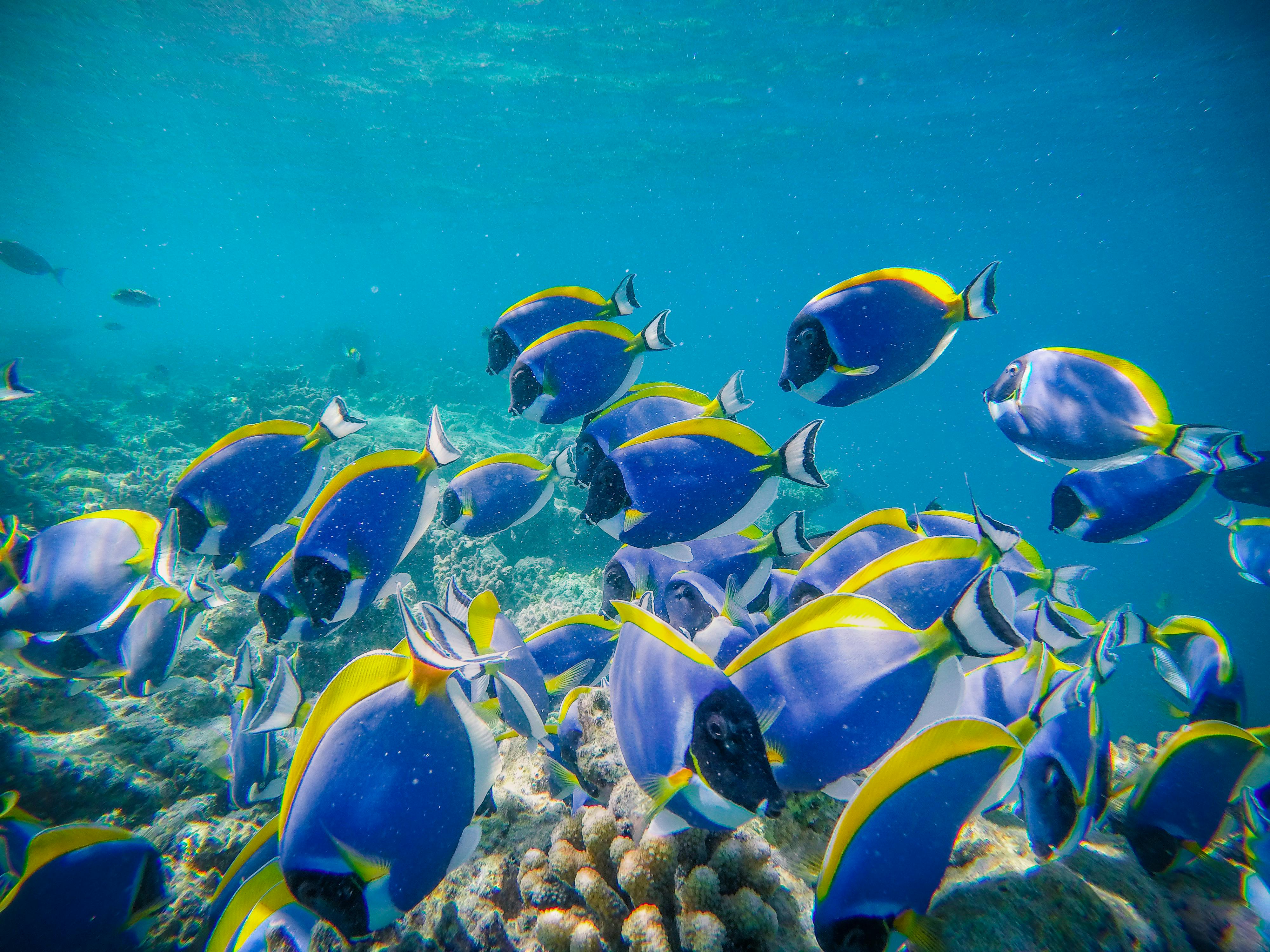
| Aspect | Requirement | Notes |
|---|---|---|
| Tank Size | 100+ gallons | More space = happier fish |
| Diet | Herbivore-based | Algae, seaweed, occasional shrimp |
| Water Conditions | Strong current | Mimics natural habitat |

Engaging with such a colorful and active fish like the powder blue tang can be incredibly rewarding when you're prepared with the right knowledge and resources. Have any tips or stories about your own experiences with powder blue tangs? Don’t hesitate to share your thoughts in the comments below!

The ideal tank size for a powder blue tang is at least 125 gallons to provide ample swimming space. These fish are very active and require a significant amount of room to move around comfortably.
Powder blue tangs primarily eat algae, so feeding them sheets of seaweed (nori) is essential. You can also supplement their diet with pellet or flake food designed for herbivorous fish for balanced nutrition.
Powder blue tangs are not recommended for beginners as they require specific tank conditions, a large setup, and stable water parameters. They can also be prone to stress and illnesses like ich if not properly cared for.
Yes, powder blue tangs can sometimes be aggressive, especially toward fish of similar size or shape. Providing ample space and hiding spots in your aquarium can help reduce aggression.
To keep a powder blue tang healthy, maintain pristine water quality, feed them a balanced diet rich in algae, and keep stress to a minimum by providing proper tank mates and space.
As you embark on your journey to become a proud powder blue tang caretaker, we're excited to have you along for the ride! Whether you're a seasoned hobbyist or a newcomer eager to learn, we’d love to connect and share more aquatic adventures with you. Dive into our Pinterest board for more stunning aquarium inspiration, or swim over to our Instagram page to see beautiful captures from fellow fish enthusiasts. If you're keen on discussions and updates about marine life, follow us on X (formerly Twitter) and like our Facebook page. We’re thrilled to be part of your aquatic journey and look forward to diving deeper together!

If you’ve ever strolled by a pond and noticed a glimmer beneath the water's surface, you might have spotted the elusive ghost carp. Named for their pale, shimmering scales and ethereal appearance, these fish captivate anglers and nature enthusiasts alike. But what do we really know about these spectral swimmers, and why are they gaining popularity?

Ghost carp, a variant of the common carp, are easily recognizable by their ghostly white and silver hues. But their appearance isn't the only thing that sets them apart. These fish are hybrids, generally a cross between koi and a common carp, known for their remarkable adaptability and resilience. Learn more about their origins by exploring their connection to the common carp and its hybrids.
Their ability to endure a range of environmental conditions makes them an appealing introduction to many ponds. Plus, they bolster the ecosystem by controlling algae and detritus thanks to their bottom-feeding habits.
Observing ghost carp is like witnessing a ballet beneath the water's surface. Their fluid movements and reflective scales catch and reflect sunlight, creating mesmerizing patterns. For pond owners, they offer a living piece of art that continually evolves with the changing light and seasons.
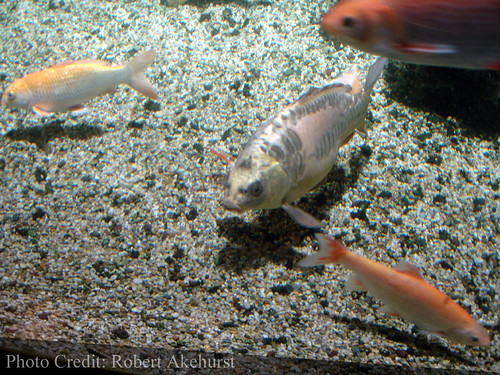
Creating a thriving environment for ghost carp doesn't require a degree in marine biology, but there are key considerations for ensuring their well-being:

| Aspect | Requirement | Benefit |
|---|---|---|
| Water Quality | Clear, low nitrate | Prevents disease |
| Space | 250 gallons per fish | Reduces stress |
| Diet | Balanced and varied | Supports growth |
Even with the best care, issues can arise. Here are a few common problems and solutions:
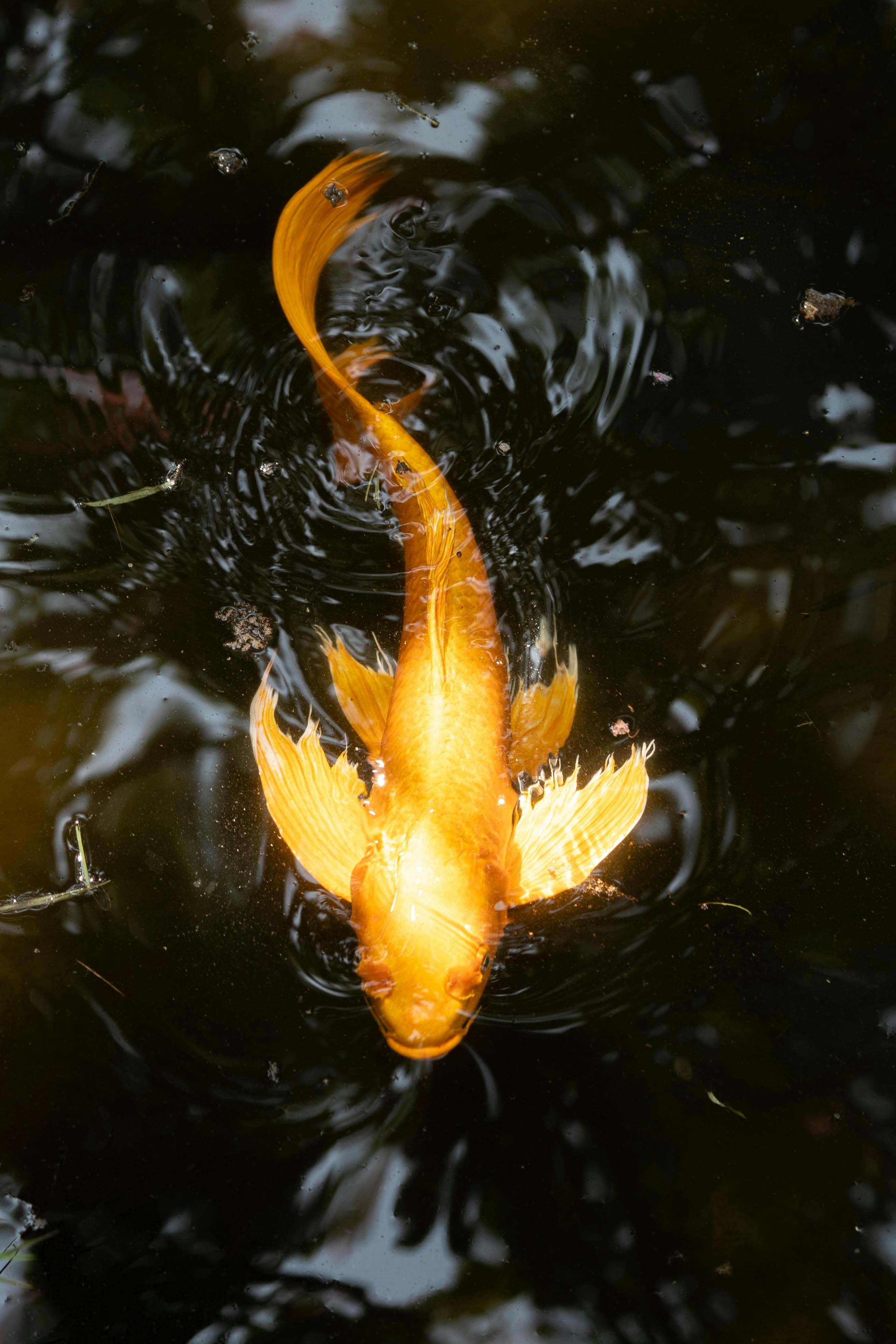
Threats such as habitat changes and other aquatic predators may also influence ghost carp populations. Scientific studies reveal the predatory impact on ghost carp eggs and larvae, underlining the importance of a controlled and balanced environment when raising them.
Ghost carp offer not only aesthetic beauty but ecological benefits to any aquatic environment willing to host them. If you've been considering adding them to your pond, why not dive in and gather firsthand experience with these stunning fish?

Have you had any encounters with ghost carp? Share your stories and tips in the comments below—your insights could be the key to someone else’s successful pond adventure!
The name "Ghost Carp" originates from their unique translucent appearance, which seems almost ethereal as they move through the water. This quality, combined with their hybrid lineage involving Common Carp and Koi, reinforces their ghostly reputation.
Ghost Carp are a hybrid between Koi and Common Carp, often featuring a more vibrant and shiny appearance compared to the typical Common Carp. They may also display lighter or metallic scales that set them apart in clear water.
Ghost Carp are primarily found in ponds, lakes, and rivers where Koi were previously introduced. They can thrive in the same habitats as Common Carp, provided the water quality supports their needs.
Ghost Carp can grow to impressive sizes, typically reaching 20-30 pounds, though larger specimens have been reported. Their size depends on factors such as habitat, diet, and overall health.
Ghost Carp are similar to Common Carp in behavior and feeding habits, making them challenging yet rewarding to catch. They often respond well to baits like sweet corn, boilies, or bread.
As we wrap up our dive into the world of ghost carp, we hope you’re as enchanted by these mysterious fish as we are. Whether you’re an angler eager for the next catch or just someone who loves a good nature mystery, there's always more to uncover. If you're curious to see more stunning aquatic creatures and stay updated on our latest adventures, why not join us on this journey? You can catch a glimpse of our captivating finds on Pinterest, where we pin our favorite fishy moments. For daily doses of inspiration, our Instagram offers a window into the serene beauty of water life. We’d love to hear your thoughts, and what better way to connect than on X (formerly Twitter), where we share quick updates and stories with fellow fish enthusiasts. And don’t forget, our vibrant community on Facebook is always buzzing with lively discussions and tips for creating the perfect aquatic habitat. Dive in with us and explore the underwater wonders!
If you're a parent of a little one, you might be wondering when it's safe to introduce those delightful, cheddar-flavored Goldfish crackers into your baby's diet. Whether in the diaper bag for a quick snack on the go or at home in the high chair, understanding the right time to offer these snacks is crucial for your child's health and development.
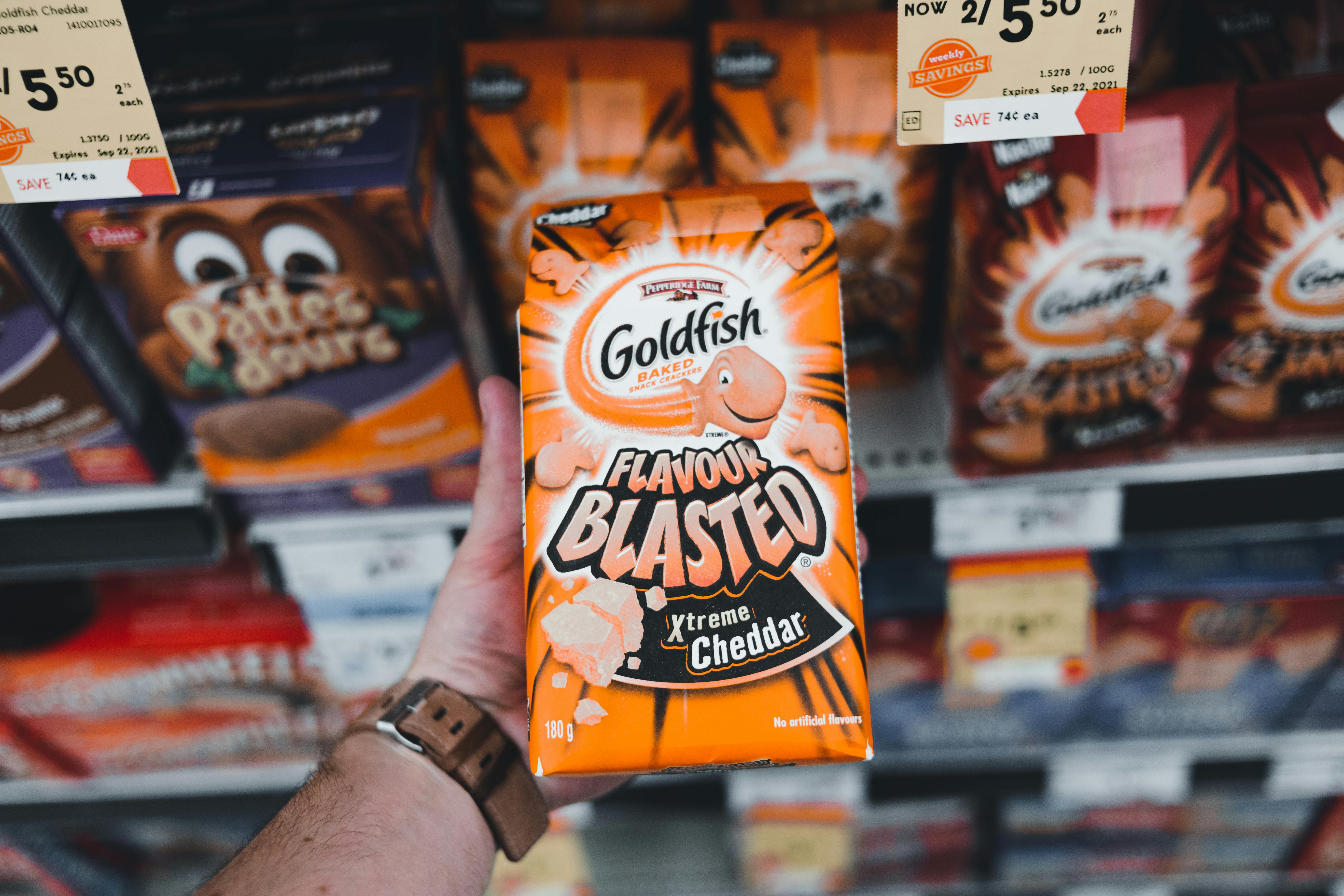
Goldfish crackers, though beloved by many kids and adults alike, should not be part of your baby's diet too early. Pediatricians generally recommend waiting until babies are at least one year old. This isn't just to avoid a cheesy mess but also due to nutritional and safety concerns.
Before their first birthday, babies' digestive systems are still developing, and most of their nutrition should come from breast milk or formula. The high sodium content in Goldfish crackers can be challenging for tiny tummies to handle. Here's a quick look into why this matters:
| Snack Type | Age to Introduce | Reason |
|---|---|---|
| Goldfish Crackers | 12 months | High sodium content |
| Soft Fruits | 6 months | Easy to digest |
| Pureed Vegetables | 6 months | Nutrient-rich |
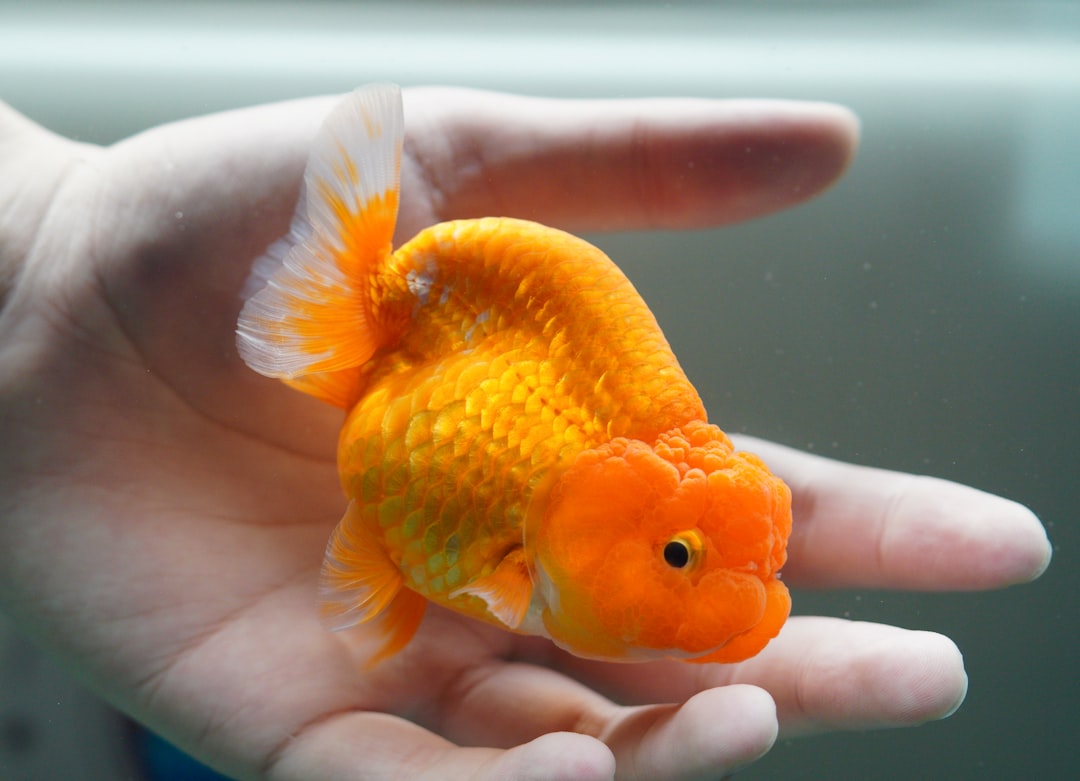
Babies between the ages of 6 and 12 months are learning to chew and manipulate food in their mouths, which means that choking is a significant risk. Goldfish crackers, with their hard texture, can pose a choking hazard for younger babies. Once your child is a confident eater around the one-year mark, you can safely introduce these snacks if they are appropriately chewed.
To better understand what you're giving your child, take a look at the nutritional content of Goldfish Baby Cheddar crackers. Knowing what's inside helps you make smarter choices tailored to your family's dietary needs.
Here are a few tips to keep in mind when offering Goldfish crackers to your one-year-olds:

If you're concerned about sodium or prefer to stick with healthier options, consider offering these baby-friendly snacks:
As your baby transitions from liquid to solid foods, it's crucial to maintain a dialogue with your pediatrician to address any dietary concerns or allergies. Their guidance ensures you offer appropriate foods at the right time to support your child's growth and development.
Are you currently navigating the world of baby snacks and have questions or tips to share? We'd love to hear your thoughts and experiences in the comments below! Your insights could be invaluable to other parents looking to make informed food choices for their babies.


Introducing "The Best Homemade Baby Food on the Planet," a comprehensive guide featuring over 200 healthy recipes tailored for your baby's nutrition. With most recipes crafted in 10 minutes or less, this book simplifies meal prep, ensuring you know exactly what goes into each bite. Delight in creating purees and recipes that your baby will love, all while fostering healthy eating habits from the start.
Goldfish crackers are generally safe for children around 18 months of age, as they are better at chewing and picking up finger foods by this age. Before 18 months, options like Cheerios may be more suitable. Consult your pediatrician for specific guidance based on your child’s development.
It’s recommended to wait until your baby is at least 12-18 months old before introducing goldfish crackers due to their salt content and texture. Younger infants may struggle to chew them safely. Instead, offer softer, unsalted snacks as an alternative.
Yes, goldfish crackers can be a safe snack for toddlers, especially after they turn 18 months. However, check the ingredient list for salt content and allergies, and ensure they are consumed under supervision to avoid choking hazards.
Healthier alternatives to goldfish crackers include unsalted rice crackers, soft fruits, plain Cheerios, or low-sodium teething biscuits. These options are easier to chew and generally have lower salt content, making them more suitable for babies.
When introducing snacks like goldfish to your toddler, start with small portions while supervising to ensure they chew properly. Gradually include them as part of a balanced diet, alongside fruits, vegetables, and other healthy snacks.
So there you have it, the scoop on when it's safe to introduce Goldfish crackers into your little one's diet! Remember, every baby is different, and it's always best to consult with your pediatrician to tailor advice to your child's needs. If you loved learning about this crunchy topic and want more parenting tips, recipes, or just a peek into our snack-filled world, we’d love to connect with you! Follow us on Pinterest for creative snack ideas, join us on Instagram for a behind-the-scenes look at our foodie adventures, tweet with us on X, or say hello on Facebook. Your parenting journey is important to us, and we’re here to make it as flavorful as possible. Happy snacking!

Did you ever imagine that keeping a fish could be as colorful and exciting as an art collection? Meet the Severum fish—a captivating addition to any home aquarium that brings both personality and kaleidoscopic brilliance to your tank. Fascinated? Let's dive into the vibrant world of Severum fish and explore the different varieties that can transform your aquatic setup from bland to breathtaking.

The Golden Severum is the glittering star of the Severum universe. Its warm yellowish-gold hue radiates like sunshine through water, calming any space it inhabits. These fish grow up to 8 inches in length, making them a majestic centerpiece. They’re moderately peaceful too, getting along with other similarly sized fish, provided your aquarium has enough space for everyone to navigate calmly. Keep in mind that while they’re not bullying types, they do like their privacy from time to time.

A touch of emerald might be exactly what your aquarium needs, and the Green Severum provides just the right shade. These fish flaunt a stunning green with subtle red specks running across their iridescent scales. They share the Golden Severum’s calm demeanor and appreciate a tank that offers plenty of hiding spots through rocks or thick plants. A Green Severum’s serene presence can soothe both the heart and mind, complementing the natural beauty of aquatic life.

Looking for something a little extra flashy? The Red-Spotted Severum is sure to catch your eye. With a shimmering pearlescent body adorned with vibrant red spots, this fish is a living masterpiece. This Severum likes its space—a generous 50-gallon tank is ideal for them to thrive without stress. Despite its bold looks, it’s peacefully inclined, mingling well within a compatible community of fish.
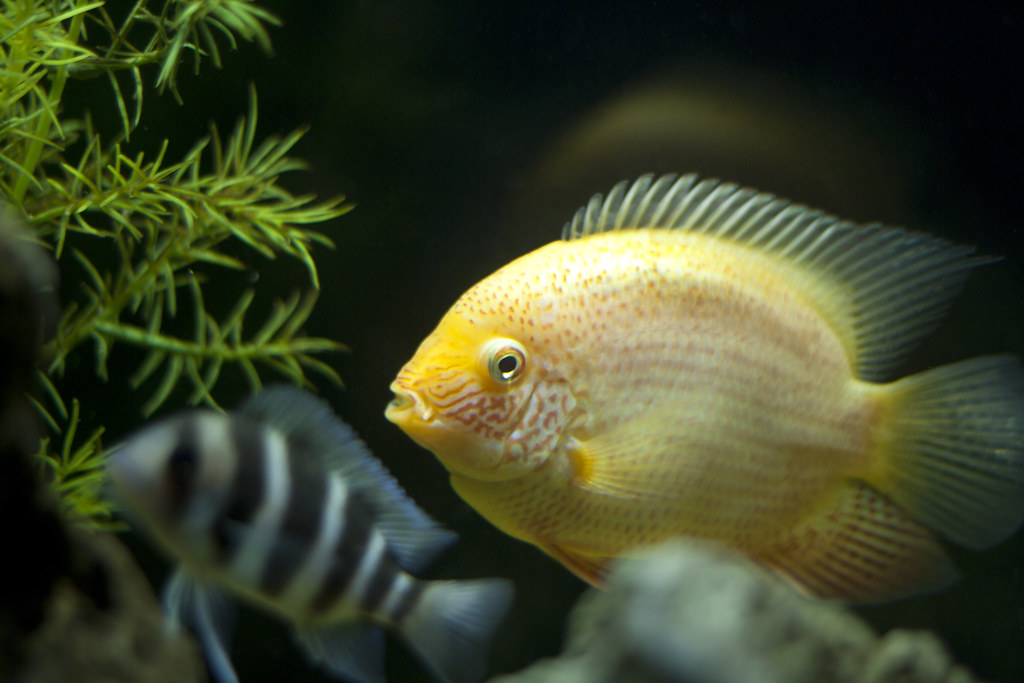
Key Features of Severum Fish
| Type | Color | Behavior |
|---|---|---|
| Golden Severum | Yellow-Gold | Moderate Peacefulness |
| Green Severum | Green with Red Specks | Calm |
| Red-Spotted Severum | Pearlescent with Red Spots | Peaceful |

When adding Severum fish to your aquarium, think about the bigger picture—or in this case, the bigger tank. Here’s what you need to ensure comfort and happiness for your fish:

Taking care of Severum fish is relatively straightforward, but it requires consistency. Here are a few essential maintenance tips:
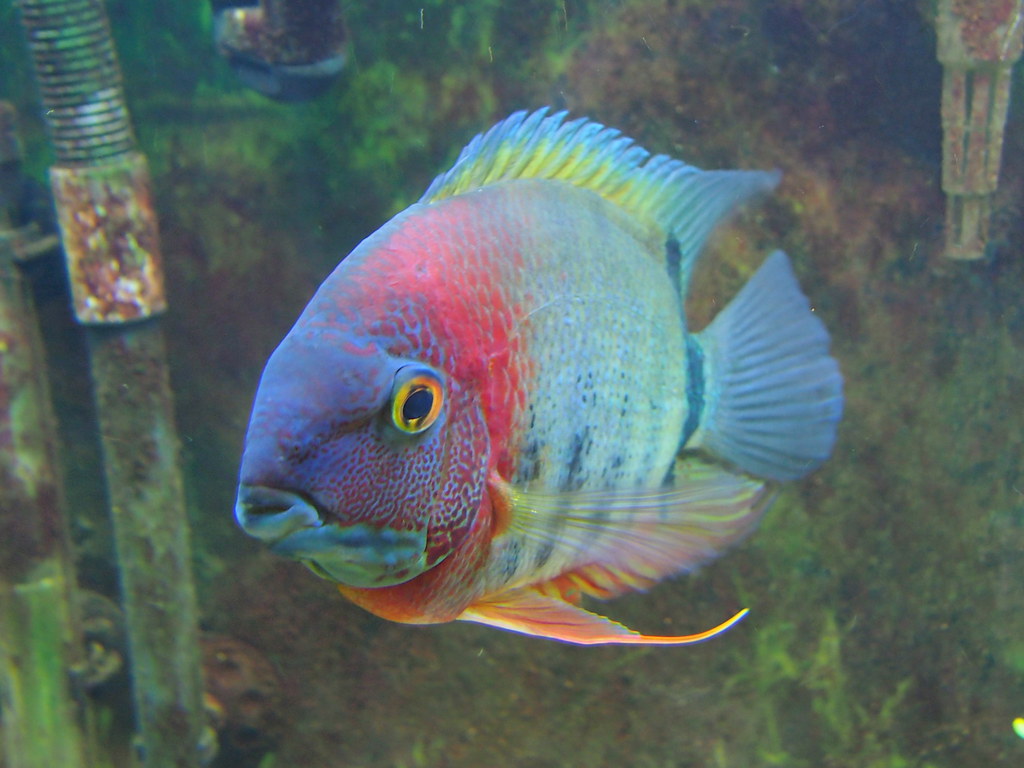
Severum fish are not just about vibrant colors and fascinating behaviors; they bring life to your tank, acting like aquatic canvases of movement and color. Thinking of inviting these charming fish into your underwater world? Do share your thoughts or experiences with these beautiful creatures in the comments below!
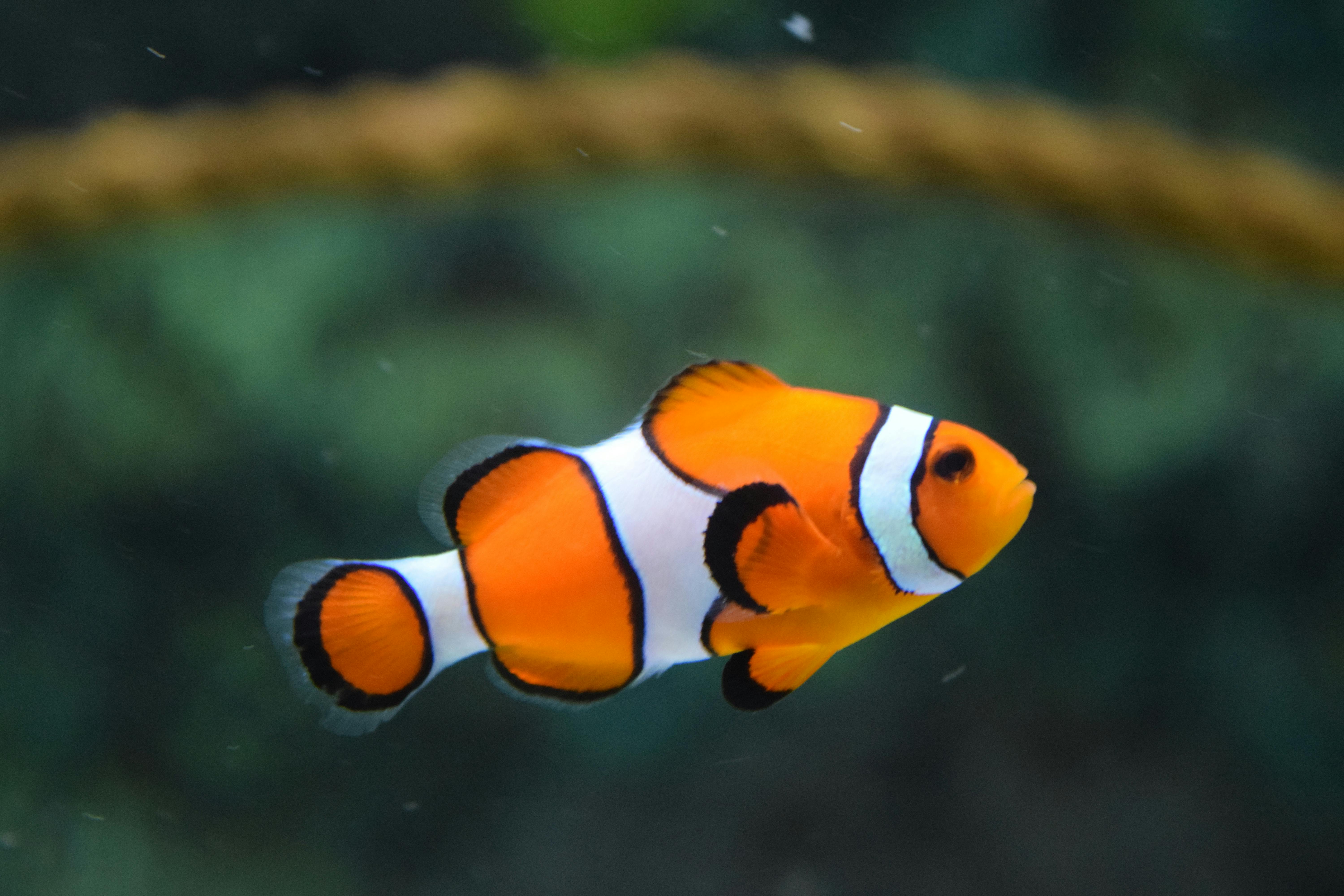
For more inspiration about aquarium life and beyond, check out our recent articles.
There are five species of Severum Cichlids found in the wild. These include Heros Severus (Banded Cichlid) and Heros efasciatus, among others. Additionally, many color morphs such as gold and red-spotted severums are bred in captivity for aquariums.
Severum fish pair well with tank mates such as Angelfish, Blood Parrot Cichlids, Tiger Barbs, Hoplo Catfish, and Gouramis. Choosing semi-aggressive species that can coexist in a similar water environment is recommended for a harmonious aquarium.
Severum fish can grow up to 8 inches (20 cm) in length, with some species reaching slightly larger sizes in ideal aquarium conditions. Ensure adequate tank size for their growth and comfort.
Severum fish are omnivorous and thrive on a varied diet. Offer them high-quality cichlid pellets, frozen or live foods like brine shrimp and bloodworms, and some vegetable matter, such as blanched spinach or zucchini.
Severum fish are moderately easy to care for, making them suitable for aquarists with some experience. They require consistent water parameters, a spacious tank, and proper tank mates to thrive.
As you embark on your journey to discover the dazzling Severum fish, remember there's always more to learn and share in the world of aquatic wonders. If you're as excited about creating a stunning aquatic habitat as we are, why not connect with us on social media? Explore a visual feast and gather more inspiration through our Pinterest boards. Dive into the vibrant photos and behind-the-scenes peeks at our aquariums on Instagram. For the latest updates and tips, keep the conversation going over on X (formerly Twitter). And, of course, we’d love to see you join our community on Facebook, where fellow fish enthusiasts share stories, ask questions, and celebrate the beauty of their aquatic friends. Let's connect and continue our underwater adventure together!

Is your fish tank looking more barren desert than lush paradise? Silk fish tank plants might just be the splash of life it needs. These vibrant, easy-maintenance marvels can transform an aquarium, offering many of the aesthetic perks of a lush aquatic garden without the hassle of live plants.

Silk fish tank plants bring a host of benefits that make them an attractive choice for both beginners and seasoned aquarium enthusiasts. Let's dive into the reasons these faux flora could be a game-changer for your aquascape:
For those prioritizing affordability and convenience, silk plants are a clear winner. Generally more budget-friendly than live plants, they offer a great alternative for aquarists conscious of their wallets. Plus, when it comes to maintenance, silk plants require virtually none! There's no need to worry about light levels, CO2, or fertilizers, making them perfect for anyone looking to enjoy the beauty of a planted aquarium without the ongoing chores.

Artificial and silk plants offer unparalleled versatility in aquarium design. Available in a wide array of shapes, colors, and sizes, they allow you to create an enchanting underwater landscape that may not even be possible with live plants due to environmental constraints. Whether you're going for a theme or just want a burst of color, these plants won't disappoint.

Safety is paramount when it comes to aquarium decorations. Silk plants are gentle and soft, making them ideal for fish with delicate fins or those that tend to bump into decorations. Unlike some fake plants, quality silk ones are designed to be fin-friendly, ensuring that your aquatic inhabitants can explore without risk of injury.
As beautiful as they are, silk plants don't quite match up to live ones in a few key areas. Table below highlights the key differences:
| Feature | Live Plants | Silk Plants |
|---|---|---|
| Maintenance | Requires regular care | Maintenance-free |
| Water Quality Contribution | Improves filtration & oxygenation | None |
| Aesthetic Versatility | Limited by plant species | Wide range of shapes/colors |

Combining silk plants with real flora can offer the best of both worlds. Real plants can help with water quality, while silk options fill in gaps and provide vibrant color. If you're curious about natural options, learning how Java moss spreads can give you insight into low-maintenance live plant alternatives that blend seamlessly with silk decor.
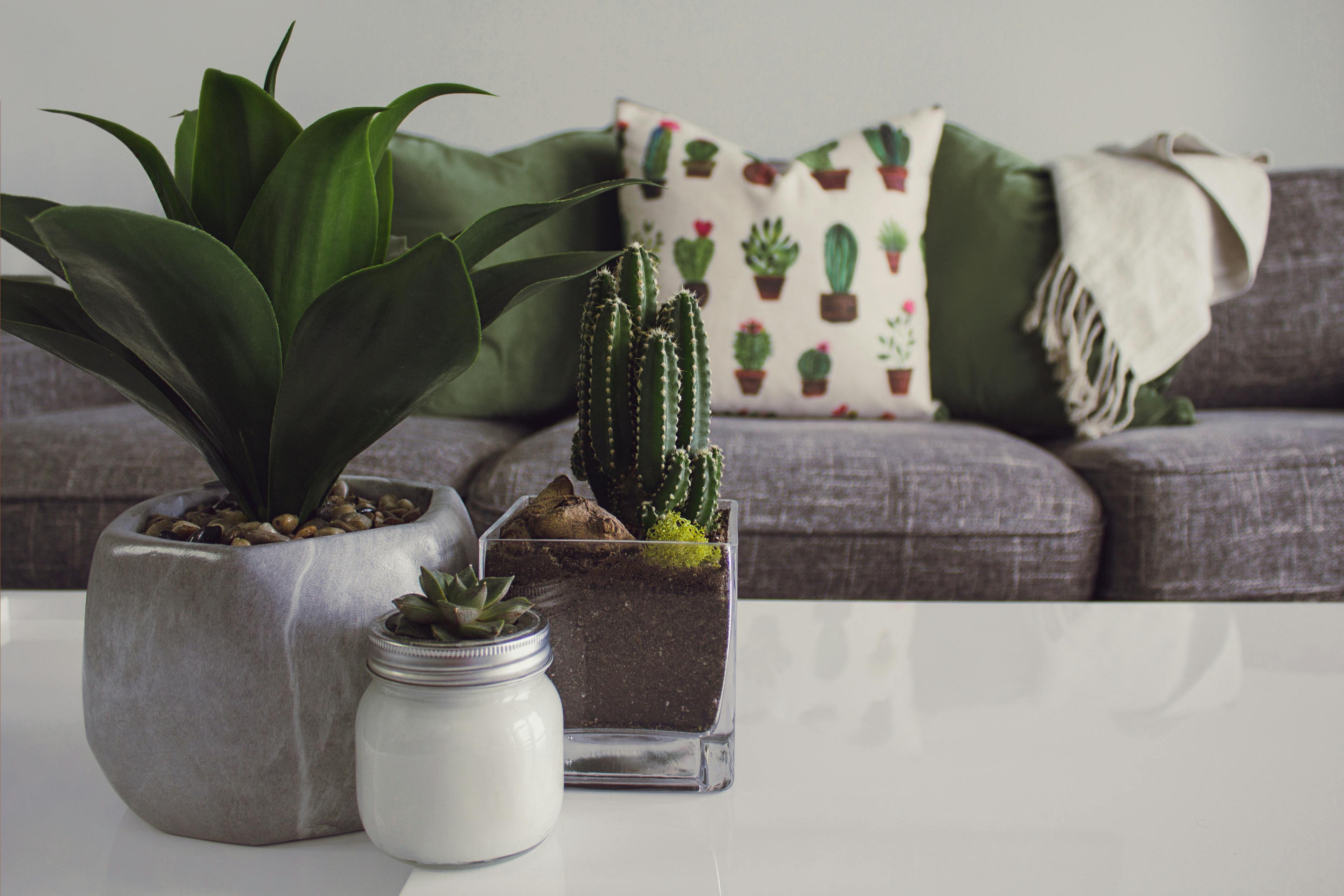
It's essential to consider the specific needs of your fish and tank when choosing decorations. Silk plants are particularly advantageous for smaller tanks where live plants might struggle and can prevent maintenance woes like debris from decaying leaves. However, they might not be ideal for aggressive fish that enjoy nibbling on foliage.
So, are silk plants the right fit for your aquarium? Dive into the comments and share your experiences or questions. Let's help each other create those stunning underwater worlds!
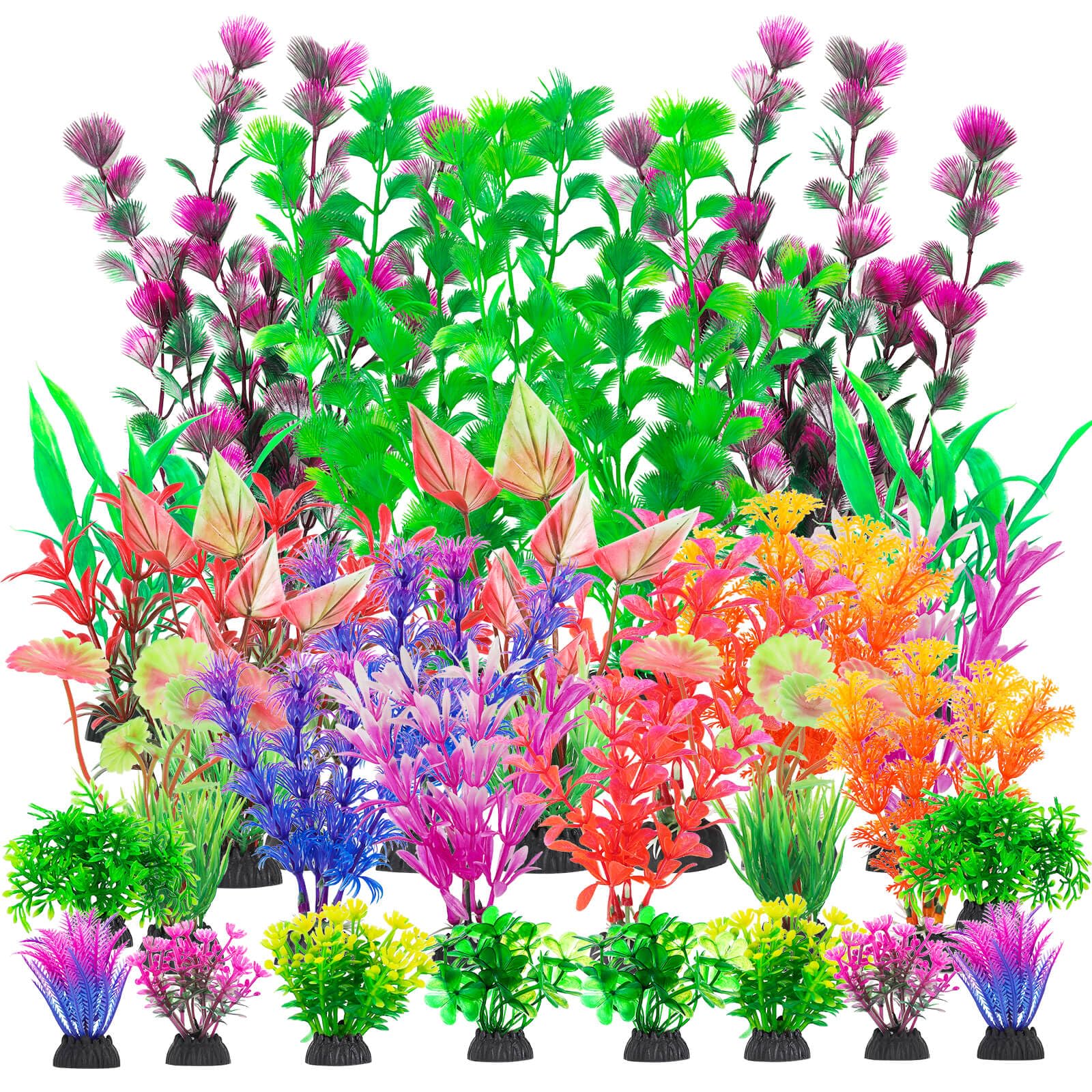
Transform your aquarium into a vibrant underwater paradise with our Colorful Aquarium Plant Set. This set includes a variety of vividly colored artificial plants that add depth and interest to your tank. Made from durable, non-toxic materials, they provide a safe and realistic environment for your fish. Easy to install and maintain, they require no special lighting or fertilizers—perfect for creating a thriving aquatic habitat effortlessly.

Transform your aquarium into a colorful underwater paradise with our Vibrant Artificial Plant Pack. This diverse set includes an array of lush, multi-colored plants designed to create a dynamic and engaging environment for your aquatic friends. Made from durable, non-toxic materials, these plants offer a safe and long-lasting decorative solution. Easy to install and maintain, they're perfect for both beginners and experienced aquarists looking to enhance their tank's aesthetic appeal.
Yes, silk plants are excellent for aquariums, particularly for tanks with fish that have delicate fins and tails. Their soft and gentle texture prevents damage to the fish, while also enhancing the aesthetic appeal of the tank. They are also a low-maintenance decoration.
Silk plants offer a realistic look, are safe for all fish, and require no special lighting or fertilizers. They are ideal for enhancing the beauty of the aquarium and are particularly useful for tanks with species that might nibble or damage real plants.
To clean silk plants, remove them from the aquarium and rinse them under warm water. For tougher algae buildup, use a soft toothbrush. Avoid using soap or harsh chemicals as they could harm your fish when returned to the tank.
Yes, mixing silk plants with live plants can create a natural-looking and diverse underwater environment. Silk plants require no care, making them a great complement to live plants, which require more maintenance.
Silk plants are perfect for bettas because their soft and smooth texture won’t harm the fish's delicate fins and tails. They also help create a safe and visually appealing habitat for bettas to explore.
As we wrap up our dive into the world of silk fish tank plants, we're delighted to have shared this exploration of bringing vibrant life into your aquarium while keeping it effortlessly chic. If you're as fascinated by the blend of nature and design as we are, we'd love for you to join our community to share inspiration, tips, and the little joys of aquarium decor. Follow us on Pinterest where we pin the most stunning aquatic setups, and check out our visual stories on Instagram for a glimpse into exquisite home aesthetics. We also chirp about the latest trends and tips over on X (formerly Twitter). Lastly, don't forget to join our Facebook family, where we connect and share our passion for a harmonious home. We can't wait to catch up with you and your aquatic adventures there!

Ready to dive into the fascinating world of breeding mollies? These delightful, colorful fish can turn your aquarium into a vibrant oasis with just a little guidance on their breeding habits. With the right setup and some practical tips, you'll soon be nurturing a thriving mollie family of your own.
Mollies are livebearers, meaning they give birth to fully formed fry instead of laying eggs. To start, you'll need to establish an optimal environment. Generally, aim for a water temperature of 75 to 80 degrees Fahrenheit, a pH level from 7.5 to 8.5, and slightly hard water conditions. A healthy aquarium makes for happy mollies ready to breed. For detailed insights into one of the most common molly species, check out the Sailfin Molly profile which covers its habitat and breeding behavior.

Before introducing mollies to your tank, it's essential to create a stress-free habitat. Ensure ample space by calculating roughly 2 gallons per adult molly, and include plenty of hiding spots using live plants or decorations. This setup helps females find refuge, which is crucial given the males' persistent mating attempts. Understanding what a pregnant molly fish looks like can help guide your tank modifications during the breeding period.
While male mollies are usually more colorful, it's important to maintain the right male-to-female ratio. A 1:3 ratio (one male to three females) is ideal to prevent males from excessively harassing females, which can cause stress and hinder breeding success. Choose healthy, active fish to ensure strong offspring. If you’re unsure whether your molly is pregnant or suffering from an illness, learn to distinguish the signs with this helpful guide on fish bloat vs. pregnancy.
Once your setup is complete, observe the courting behavior. Male mollies will display and chase the females, flaring their fins in an attempt to impress. A successful breeding will become apparent as the female's belly grows, typically noticeable within a few weeks. To better understand the timeline, check out how long mollies are pregnant so you know what to expect during the gestation period.
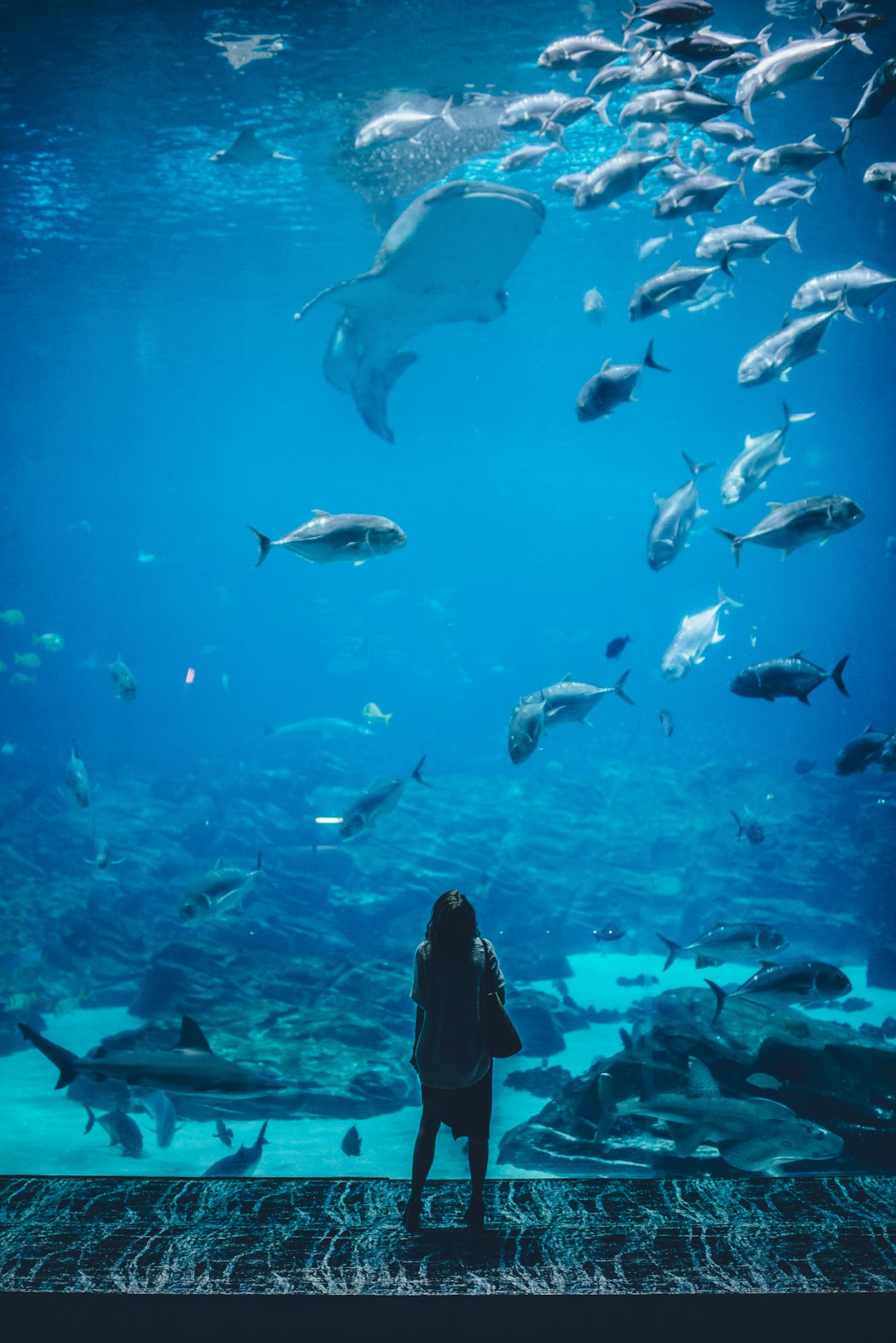
As your mollies prepare to welcome new life, consider isolating the pregnant female in a breeding box to protect her and the fry from being eaten by other fish. Another option is densely planting an area of the tank where fry can hide naturally. Fry will emerge fully developed and capable of swimming immediately. You may also find it useful to explore how long fish are pregnant overall, to compare gestation periods and better prepare your tank.
Once your mollies have added to the population, focus on feeding the fry a diet rich in nutrients. Crushed fish flakes, baby brine shrimp, or specialized fry food offer optimal growth. Keep the tank clean and ensure regular water changes to promote their development.
Remember, breeding mollies can be unpredictable. Every attempt is a learning experience full of surprises. Have you ever tried breeding mollies? Share your experience—it might just be the insight another reader needs to hit their fish-raising stride!
Breeding mollies is simple! Ensure you have at least one male and one female molly in a well-maintained aquarium. These livebearers require clean water and proper temperatures. Females can give birth every 30-60 days if conditions are favorable, producing up to 50 fry at a time.
Mollies can have up to 50 fry per brood, though younger females may have smaller batches initially. With proper care, females can give birth every 30 days as long as males are present in the tank.
Molly fry thrive in a separate, clean tank with plenty of hiding spots such as plants or breeder boxes. Feed them crushed flakes or specialized fry food multiple times daily to ensure healthy growth.
Male mollies are slimmer with pointed anal fins (gonopodium), while females are rounder and have a fan-shaped anal fin. Observing their behavior can also help; males are more active in courting.
Although mollies and platies are both livebearers, they are different species and cannot interbreed. Stick with compatible pairs of the same species for successful breeding.
Breeding mollies can be such a rewarding journey, transforming your humble tank into a haven of color and life—I'm genuinely excited for you to get started! But don't worry, you're not alone on this adventure. If you’re eager for more tips or just want to share your own vibrant mollie tales, why not join our little community? You can dive deeper into the aquatic world by following us on Pinterest for beautifully curated boards of inspiration here, or see what your fellow fish enthusiasts are up to on Instagram by clicking this link. For real-time updates and to join the conversation, head over to our X profile or hang out with us on Facebook. We love hearing from passionate aquarists like yourself, so don't hesitate to connect and share your mollie moments with us. Happy breeding, and see you online!
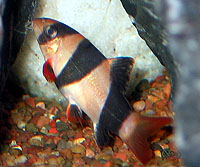
Thinking about adding some colorful clown loaches to your aquarium family? You're in for a treat—these lively fish are a delight to watch, but their large size means they come with some specific housing needs. Let's dive into what it takes to create a comfortable home for these charismatic creatures.
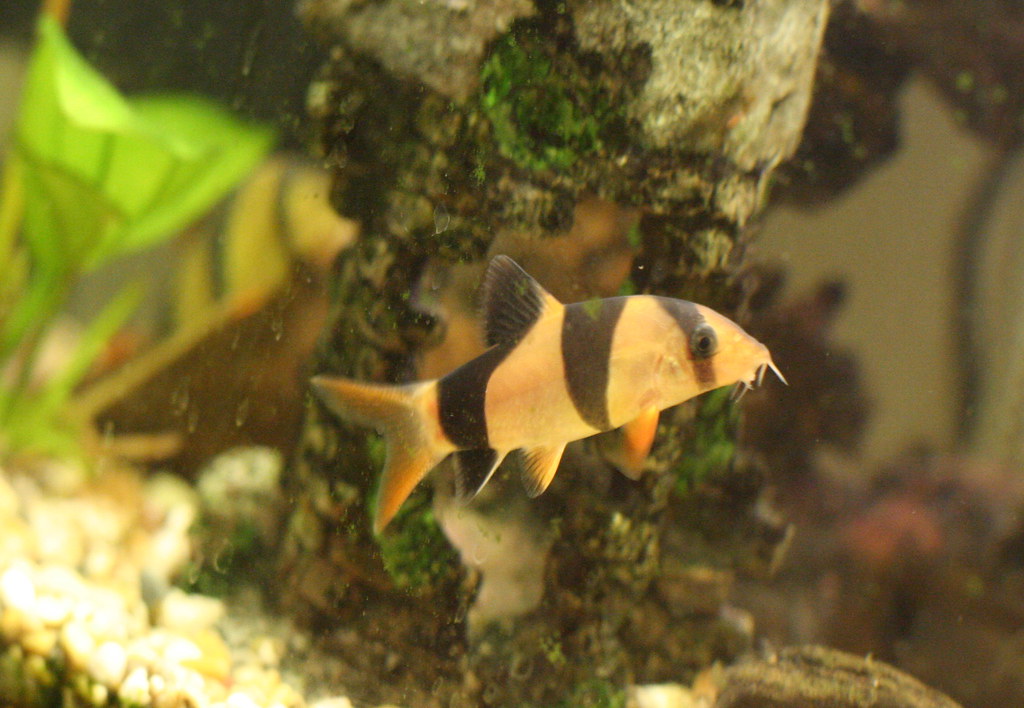
Clown Loach Full Size: Facts for Enthusiastic Aquarists explains how these vibrant fish can grow as large as 12 to 15 inches, making proper tank planning crucial. Clown loaches (Chromobotia macracanthus) are more than just their quirky name. Originating from Indonesia, they can grow to a hefty size of around 12-13 inches, with some even reaching up to 15 inches! Given their size, these fish need plenty of room to roam.
Here's a quick look at the recommended tank sizes based on the age and development stage of clown loaches:

| Loach Stage | Tank Size | Tank Dimensions |
|---|---|---|
| Juvenile (up to 3 inches) | 55-75 gallons | 48" x 12" x 20" |
| Young Adult (6 inches) | 100 gallons | 60" x 18" x 24" |
| Adult (12 inches) | 150-180 gallons | 72" x 24" x 24" |
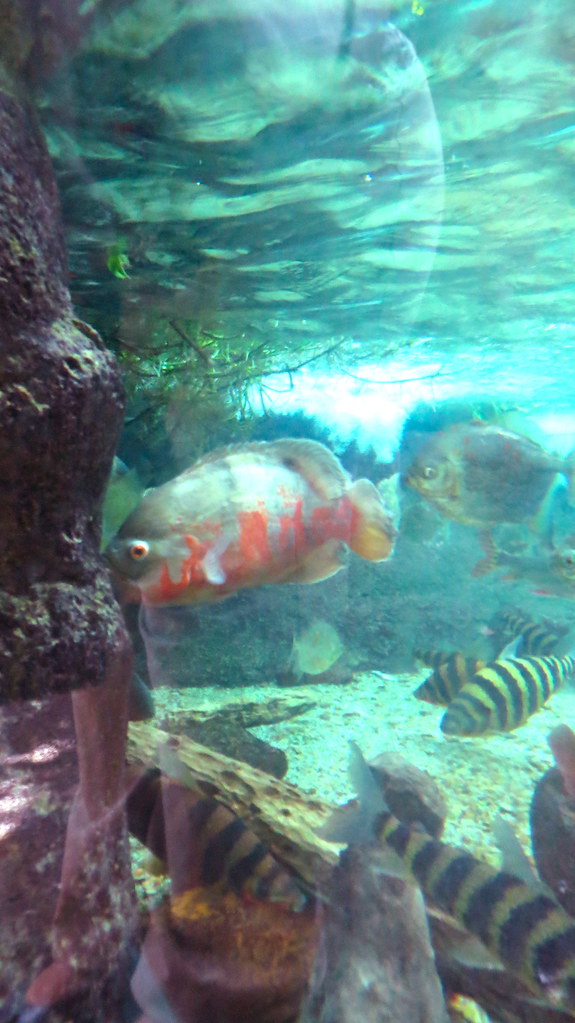
If you think one clown loach is entertaining, imagine a whole school of them! Clown loaches are social animals that thrive best in groups of at least five. They enjoy each other’s company and display more natural behaviors when they have buddies around. For more detailed insight into their natural behaviors and origins, check out the Clown Loach Wikipedia page.
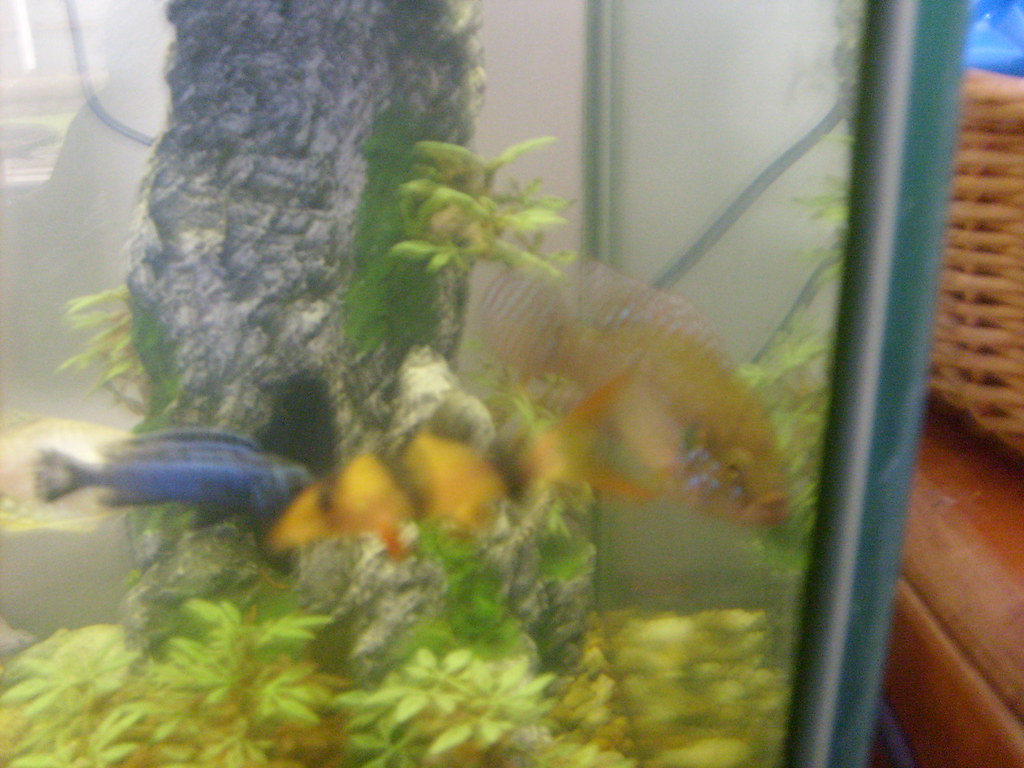
A spacious tank isn’t just about size—it’s about creating a lively, interactive environment.

While small tanks might suffice for your young clown loaches, be prepared for their inevitable growth spurt. Many new owners make the mistake of underestimating the space these fish require. Although starting with a 55-75 gallon tank can work for juveniles, eventually, you'll want at least a 150-gallon setup to house adults comfortably.
Consider your current setup and future plans carefully. If you have the ambition and space, starting with a larger tank can save the hassle of upgrading later. If you're currently housing fish in a smaller tank, remember they will need more room as they grow.
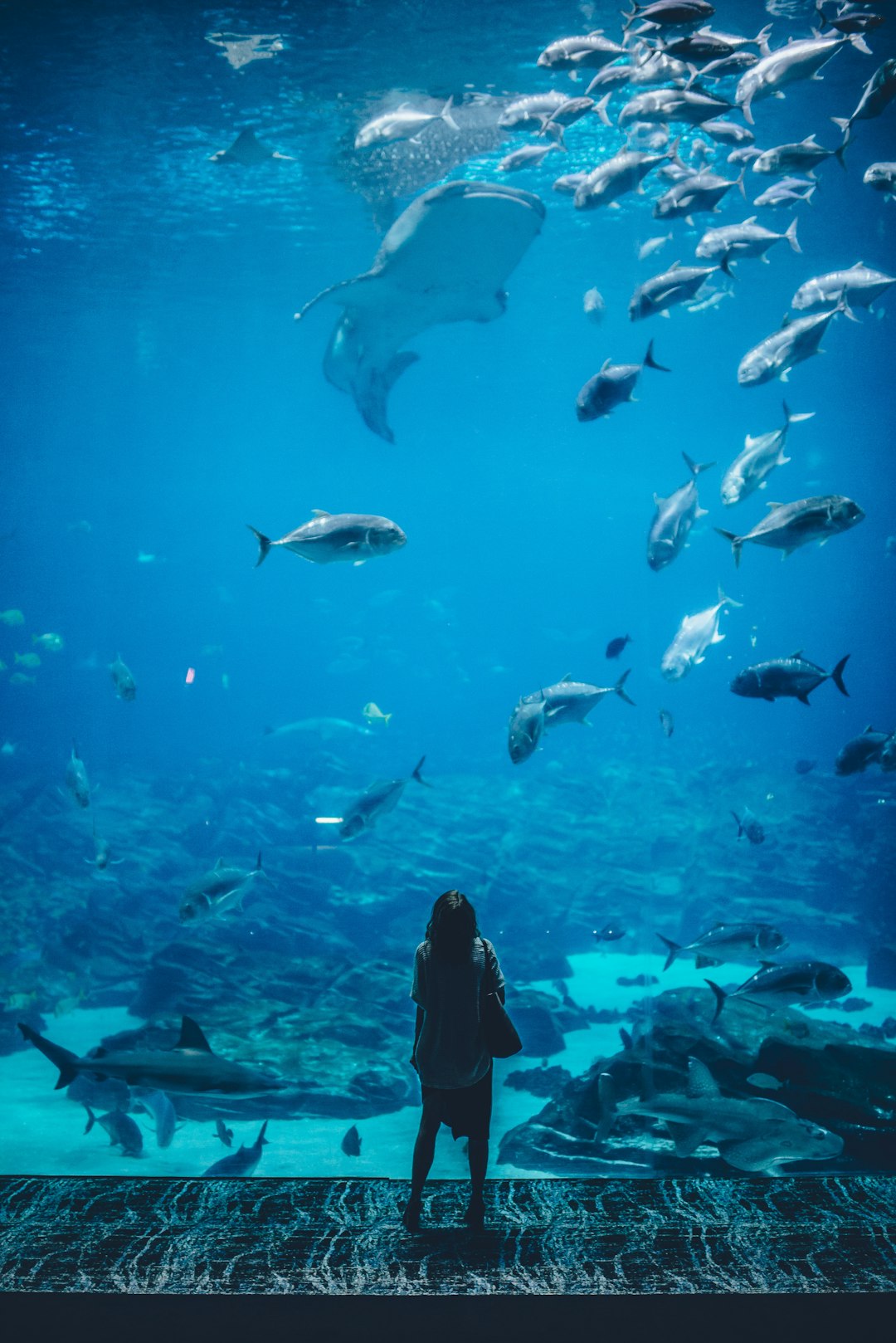
Beyond size, the tank environment plays a crucial role in your clown loach’s well-being. Ensure your tank has:

Maintenance Tip: Regular partial water changes (10-15% bi-weekly) keep nitrate levels low, fostering a healthy environment.
Deciding to keep clown loaches is not just about how much space they need now, but also planning for that future upgrade. Are you ready to commit to these beautiful swimmers for the long haul? Share your thoughts or experiences in the comments below and join the community of clown loach enthusiasts!
Clown loaches need a spacious tank to swim and thrive. For small groups of five juveniles, the minimum tank size recommended is 55 gallons. For adults, a larger tank of at least 180 gallons is necessary.
Clown loaches are active swimmers and require a lot of space. Keeping them in a small tank can lead to stress and health problems. A minimum of 55 gallons is needed for juveniles, but adults need tanks of at least 180 gallons.
Clown loaches are social fish that thrive in groups. It is ideal to keep at least five clown loaches together to mimic their natural habitat and reduce stress.
Clown loaches do well with peaceful tank mates such as tetras, gouramis, and barbs like tiger barbs. Avoid aggressive or overly territorial fish.
Clown loaches require clean, well-filtered water, a proper diet of both protein and vegetables, and a spacious aquarium with hiding spots. Regular water changes and monitoring water quality are essential.
As you embark on your clown loach adventure, remember that setting up the perfect tank is just the beginning of your journey in aquarium care. I'm genuinely excited to hear about your experiences, so why not connect with us on Pinterest where you can find even more inspiration for your fishy friends? You can also join our lively discussions and share stunning aquarium snapshots over on Instagram. If you have questions or want to chat about your own tank setup, head over to our X account. And let's not forget the wonderful community waiting for you on Facebook. Can't wait to see you there and hear all about the vibrant world you're creating for your aquatic companions!
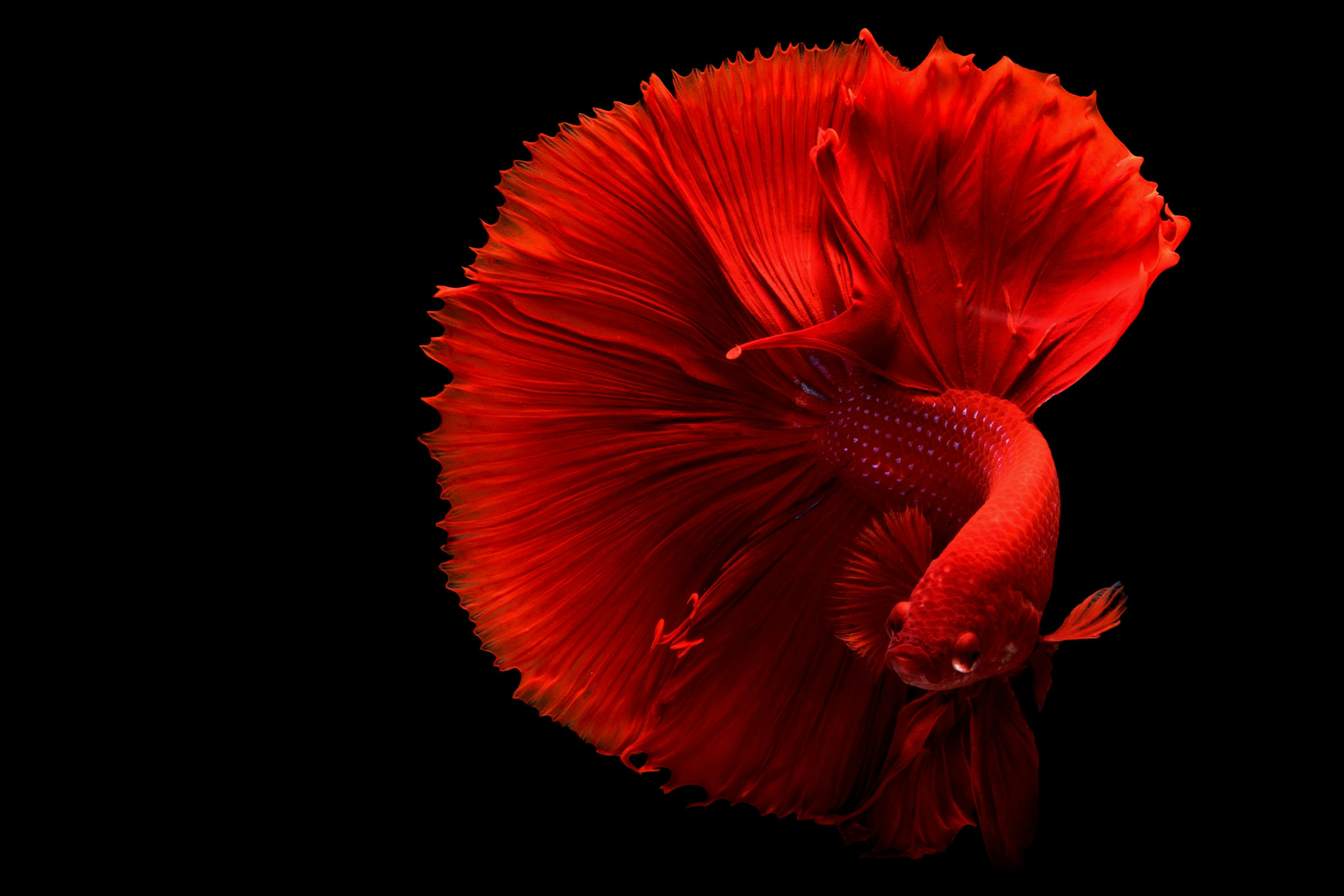
The Elephant Ear Betta male, also known as the Dumbo Betta, is not just a fish; it's an aquatic star with its large, fluttering fins resembling the ears of an elephant. Whether you're a seasoned aquarist or a beginner, these visually captivating fish can transform your tank into a vibrant display of color and fin flair. Let's dive into what makes these bettas unique and how to care for them.

With fins that are both graceful and grand, male Elephant Ear Bettas are a spectacle in any aquarium. Their large pectoral fins, paired with tails that range from the fan-like Halfmoon to the spiky Crowntail, make them standout swimmers. These bettas come in a stunning palette—vibrant reds, blues, greens, and even purples, often accentuated with patterns like stripes or spots. In comparison, females have a slimmer build and less dramatic fins, making the males particularly eye-catching. If you're intrigued by bettas with a similar majestic charm, explore the male betta fish with a crown-like appearance for more inspiring tank additions.
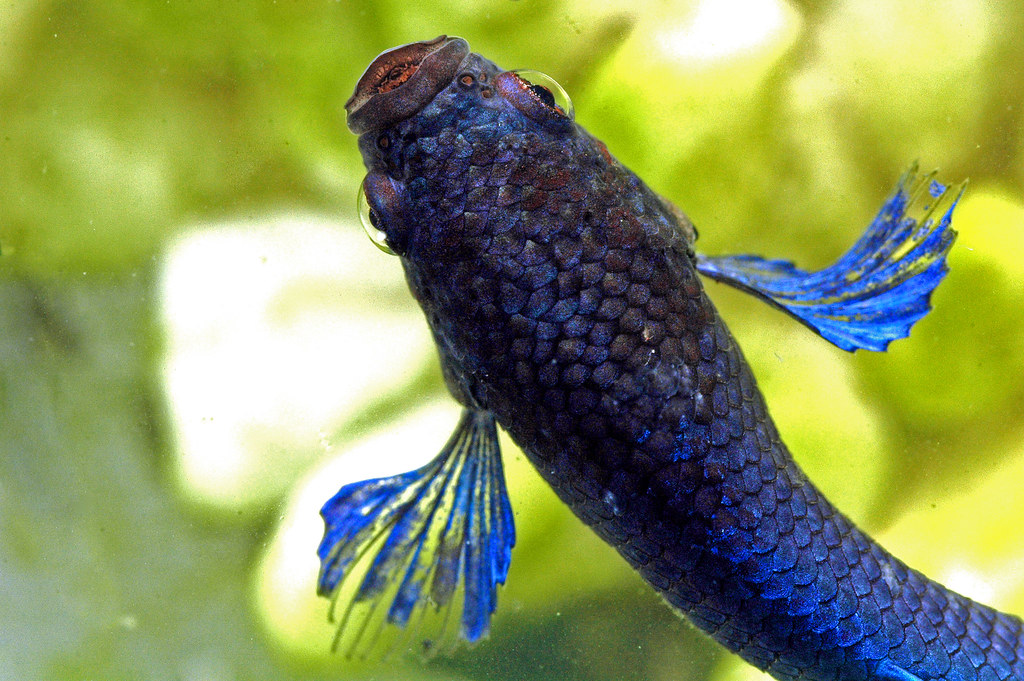
Originating from Thailand through meticulous selective breeding, Elephant Ear Bettas emerged to showcase both oversized fins and brilliant coloration. For an in-depth understanding of their heritage, check out this overview of the Siamese fighting fish, which details their origin and species variations.
| Variety | Fin Description | Trait Focus |
|---|---|---|
| Halfmoon | Fan-shaped, extending 180 degrees | Symmetry and spread |
| Crowntail | Spiky, crown-like appearance | Elongation and style |
| Rosetail | Wrinkled, luxuriant folds | Fullness and texture |
If you're particularly drawn to the dramatic beauty of the Crowntail, the Rainbow Crowntail Betta Fish care guide offers extensive tips and visuals for optimal upkeep.

Creating an ideal environment for your Elephant Ear Betta is crucial. While a minimum of 4 gallons is needed, it's recommended to have at least 20 gallons for more space and healthy living conditions. Keep the water temperature consistent between 75°F and 82°F, and use gentle filtration to prevent any stress to their delicate fins. Decorate the tank with live plants and smooth substrates like sand, allowing them ample hiding spots without risking fin damage.

A healthy diet for Elephant Ear Bettas includes a mix of high-protein foods. Pellets tailored for bettas, alongside live or frozen foods such as bloodworms and brine shrimp, provide essential nutrients. For an easy and nutritious option, try incorporating frozen daphnia for bettas, which can aid in digestion and overall health.
Additionally, choosing the right commercial food is vital. Consider this highly-rated option on Amazon’s Betta Fish Food by Ultra Fresh for a reliable, protein-rich diet your betta will love.
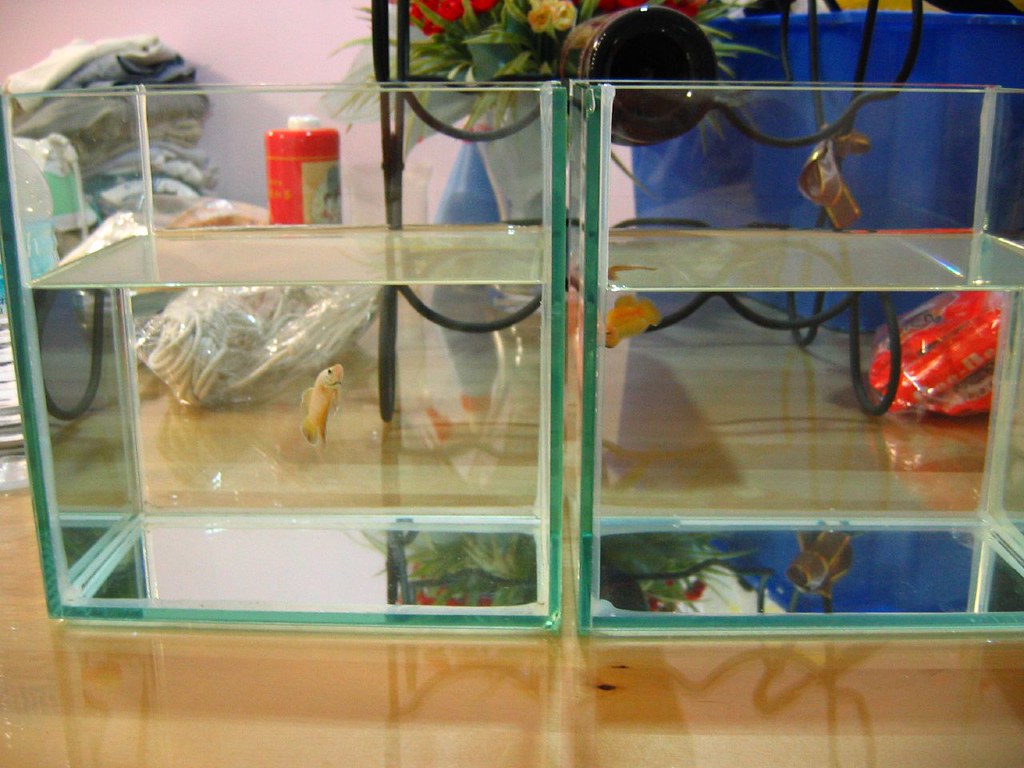
Known for their territorial behavior, male Elephant Ear Bettas can be aggressive, especially towards their kind. However, with careful selection, they can share a tank with peaceful species like Zebra Danios, Neon Tetras, and Corydoras. Ensure a spacious environment to foster harmony among tank mates and reduce stress.
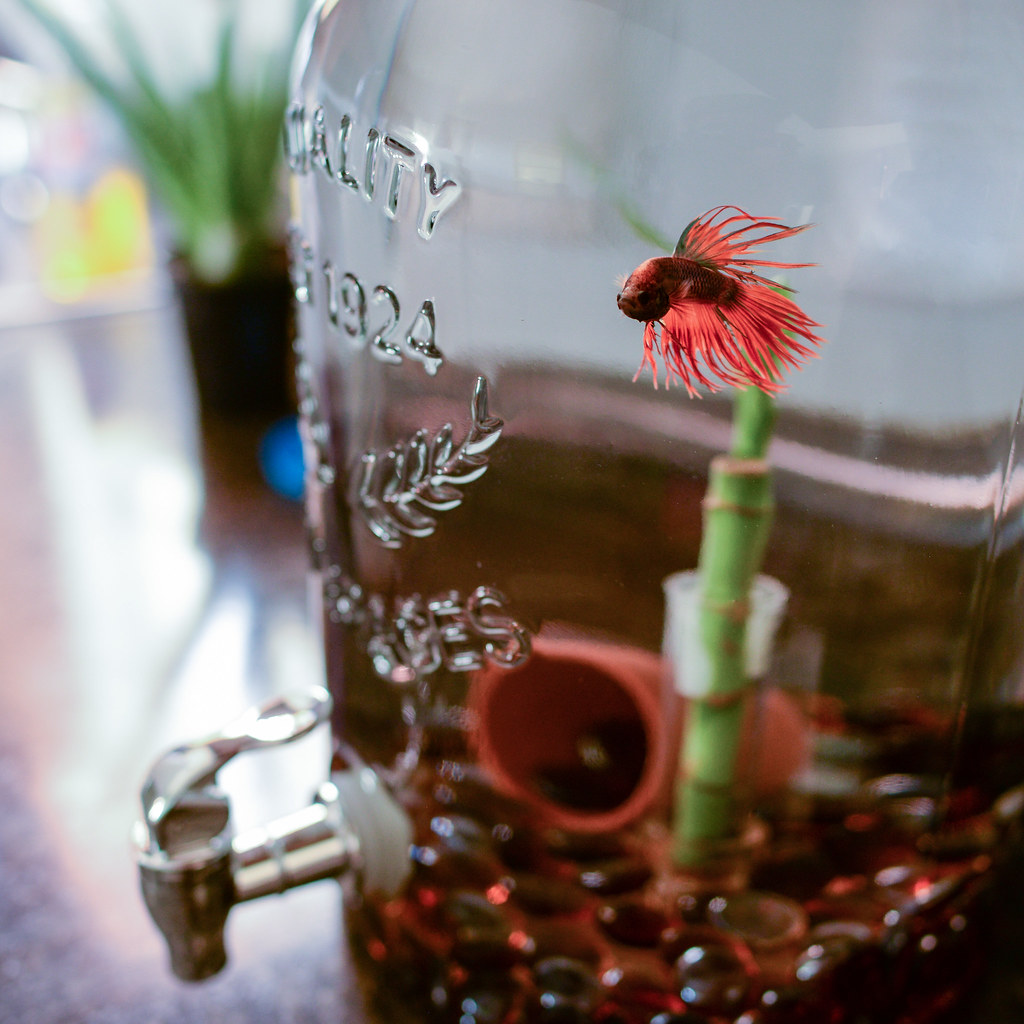
Like all bettas, Elephant Ears are prone to conditions such as fin rot and parasitic infections. Maintaining high water quality and a stable tank environment helps in preventing these common ailments.
Caring for the Elephant Ear Betta can be a rewarding journey filled with bursts of color and movement. Are there tricks you use to keep your betta in top shape, or perhaps a setup that enhances their natural beauty? Share your experiences or tips in the comments below—let's build a community of inspired aquarists!
Elephant ear bettas are somewhat rare because the trait is highly recessive. While they are easy to breed, only a small percentage of the offspring will inherit the signature elephant ear fins, even if both parents have them.
Male elephant ear bettas are territorial and aggressive, making it challenging for them to coexist peacefully with other fish. It’s recommended to house them alone or only with compatible tankmates, such as non-aggressive bottom dwellers.
Elephant ear bettas thrive on a diet of high-quality betta pellets, freeze-dried bloodworms, and brine shrimp. They benefit from a varied diet to ensure optimal health and vibrant color.
Male elephant ear bettas typically have more vibrant colors and larger fins, including their signature elephant ear fins. Females are usually smaller, with less prominent fins and more muted colors.
Provide a tank of at least 5 gallons with soft, warm water (78–80°F), minimal current, and plenty of plants or decorations for hiding spots. Regular water changes and a calm environment are essential for their health and stress levels.
As we wrap up our deep dive into the enchanting world of Elephant Ear Betta males, I hope you've found a new appreciation for these aquatic wonders. They're more than pets; they're the vibrant dancers of your aquatic stage. If you're eager to explore more about these captivating creatures or need tips to create a flourishing habitat, don't hesitate to connect with us on social media. We love sharing mesmerizing images and helpful insights over on Pinterest—a treasure trove of visual inspiration awaits you there! For daily doses of aquatic beauty and some behind-the-scenes fun, follow us on Instagram. If quick tips and interactive discussions are more your style, hop on over to X. And for a warm community of fellow marine enthusiasts, our Facebook page is the perfect gathering spot. Whatever platform you choose, we're excited to continue this aquatic journey with you!